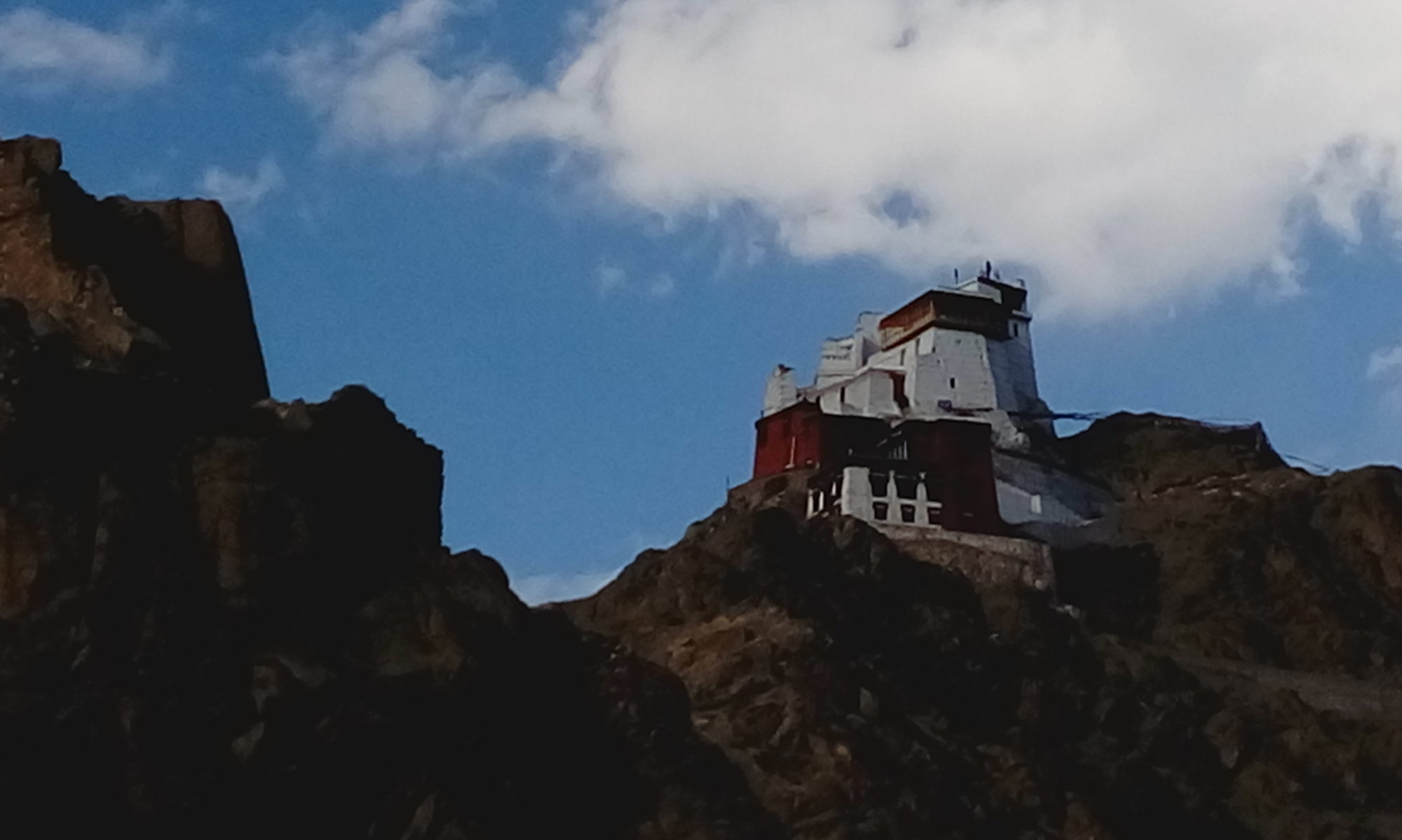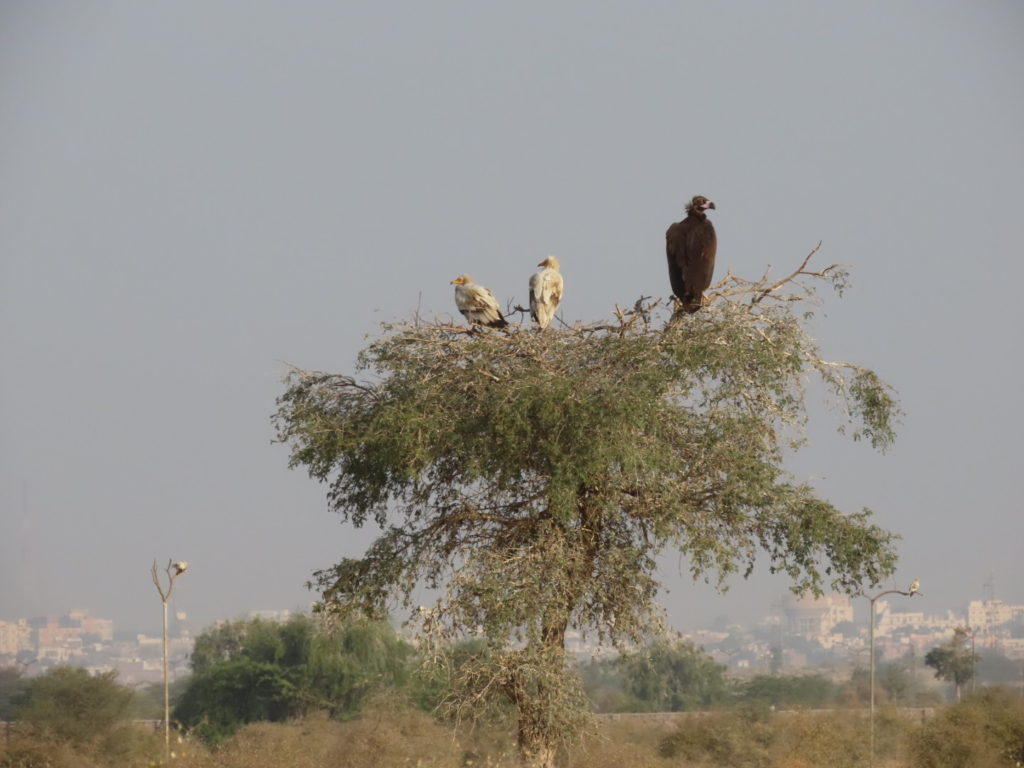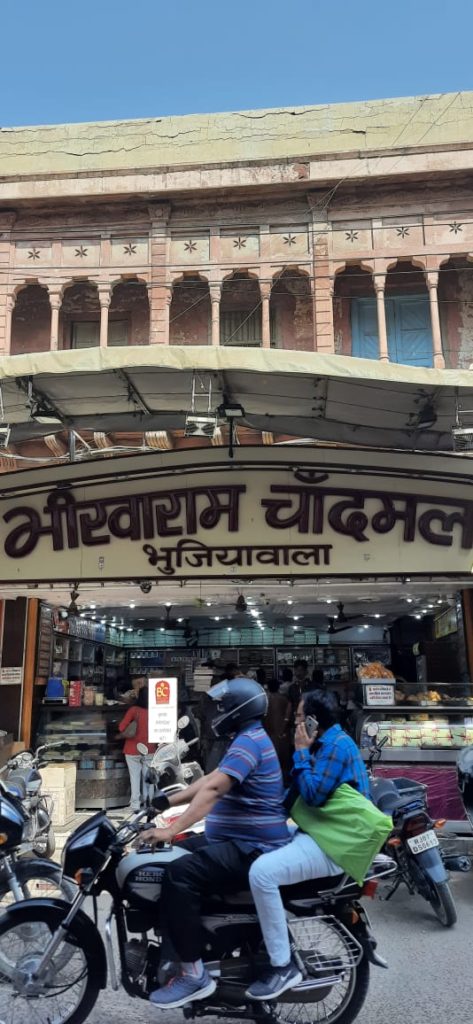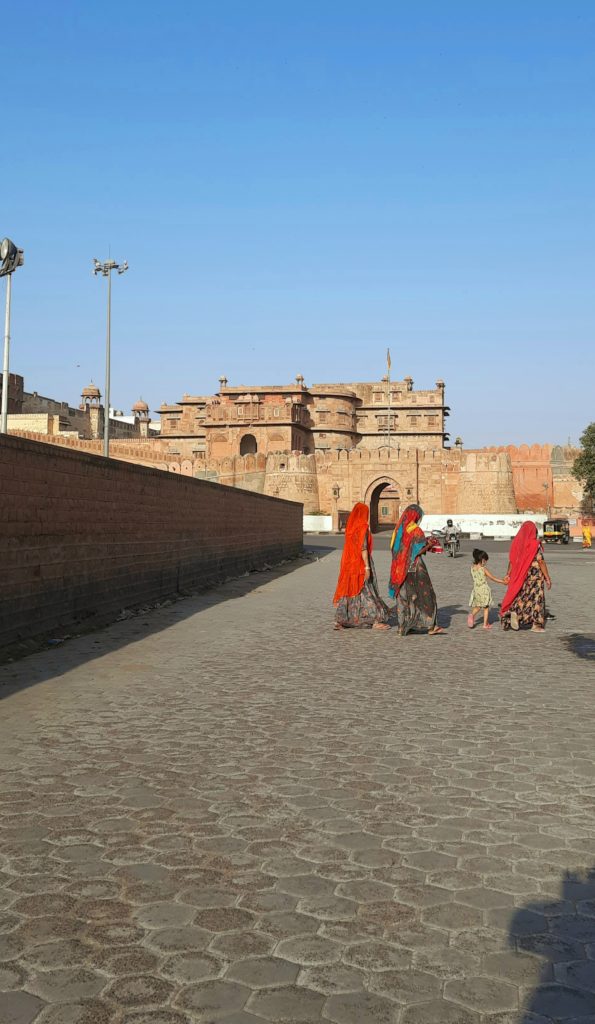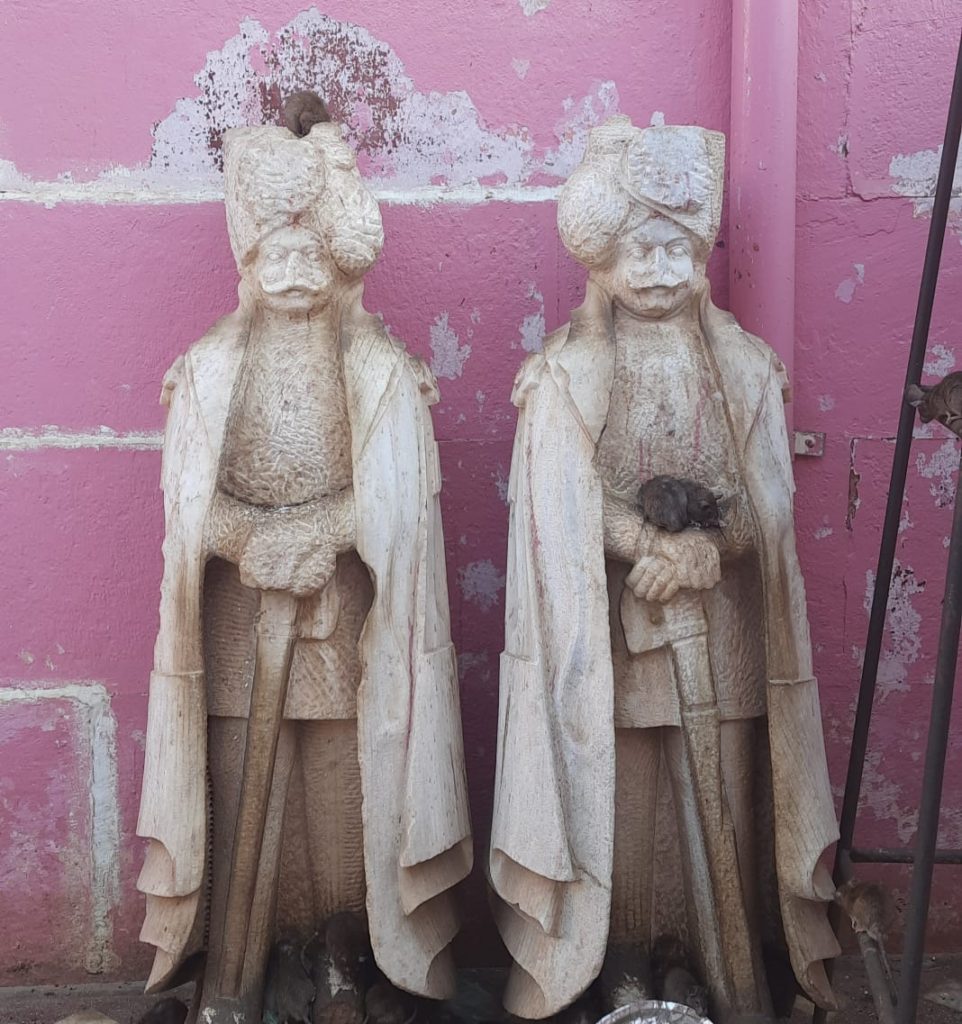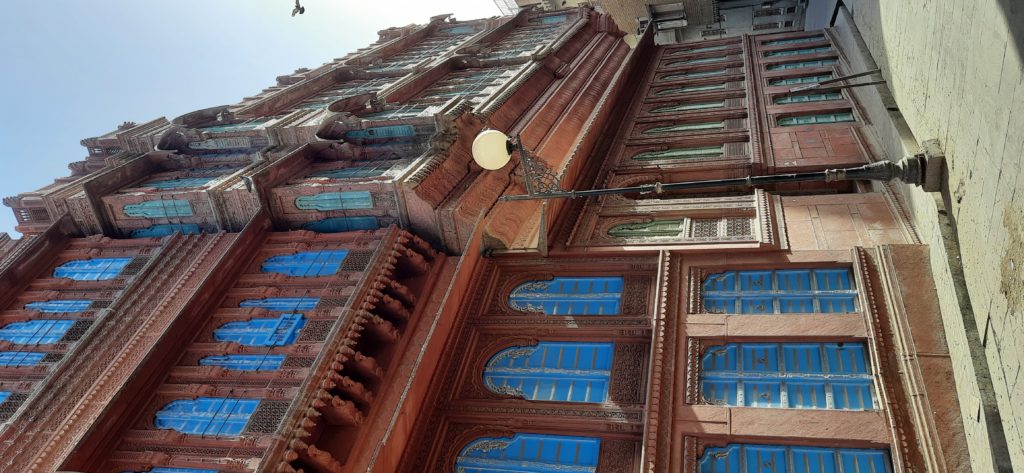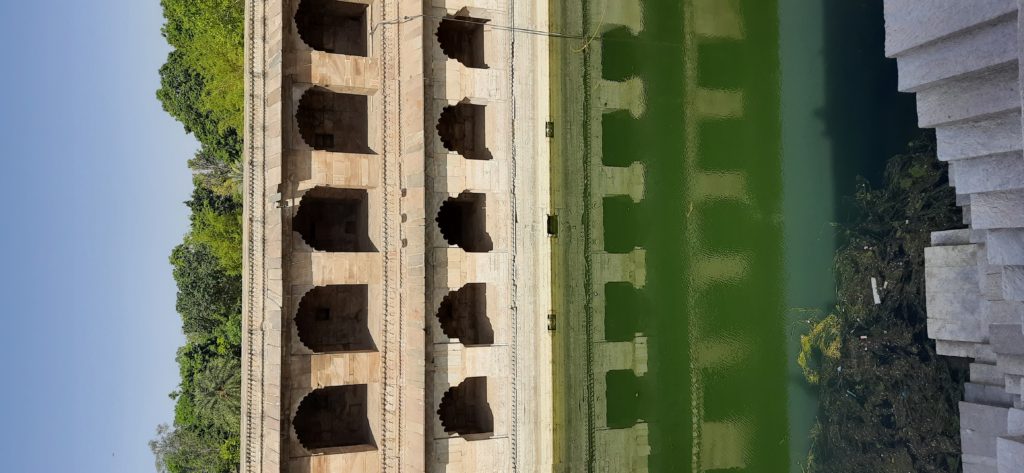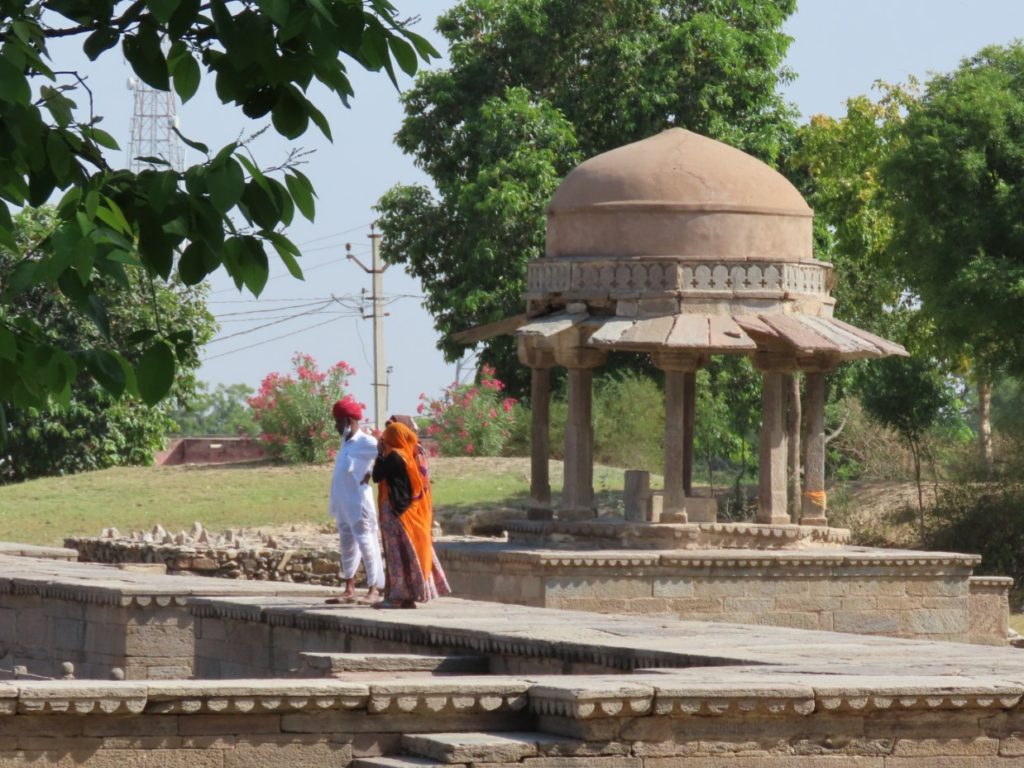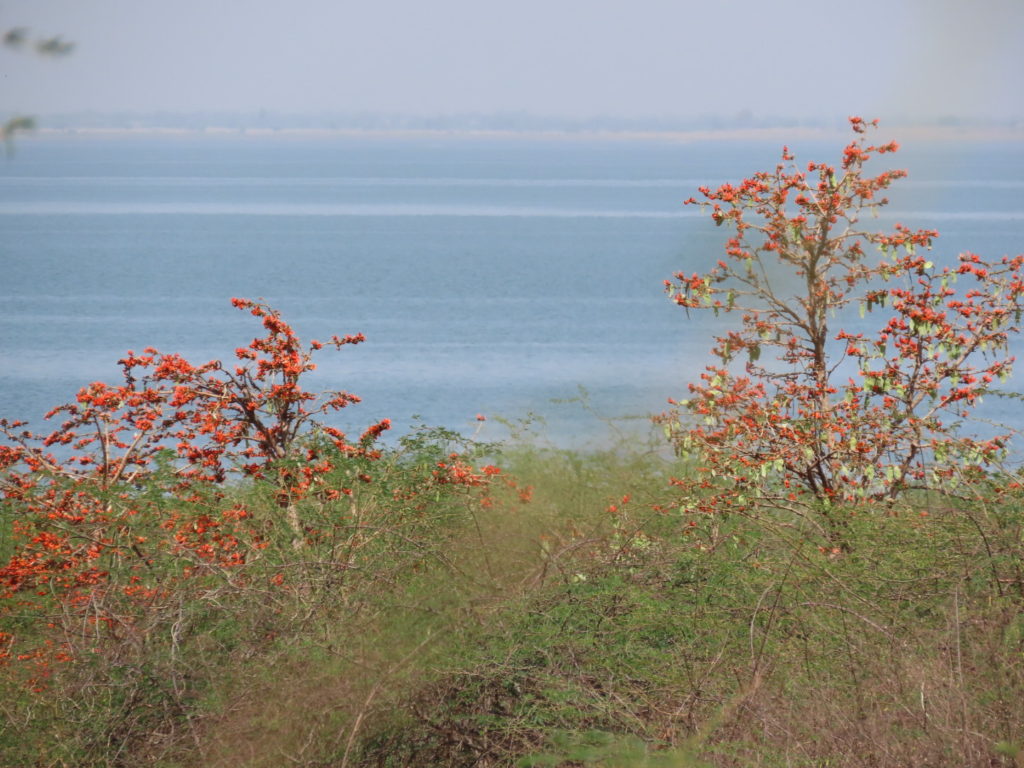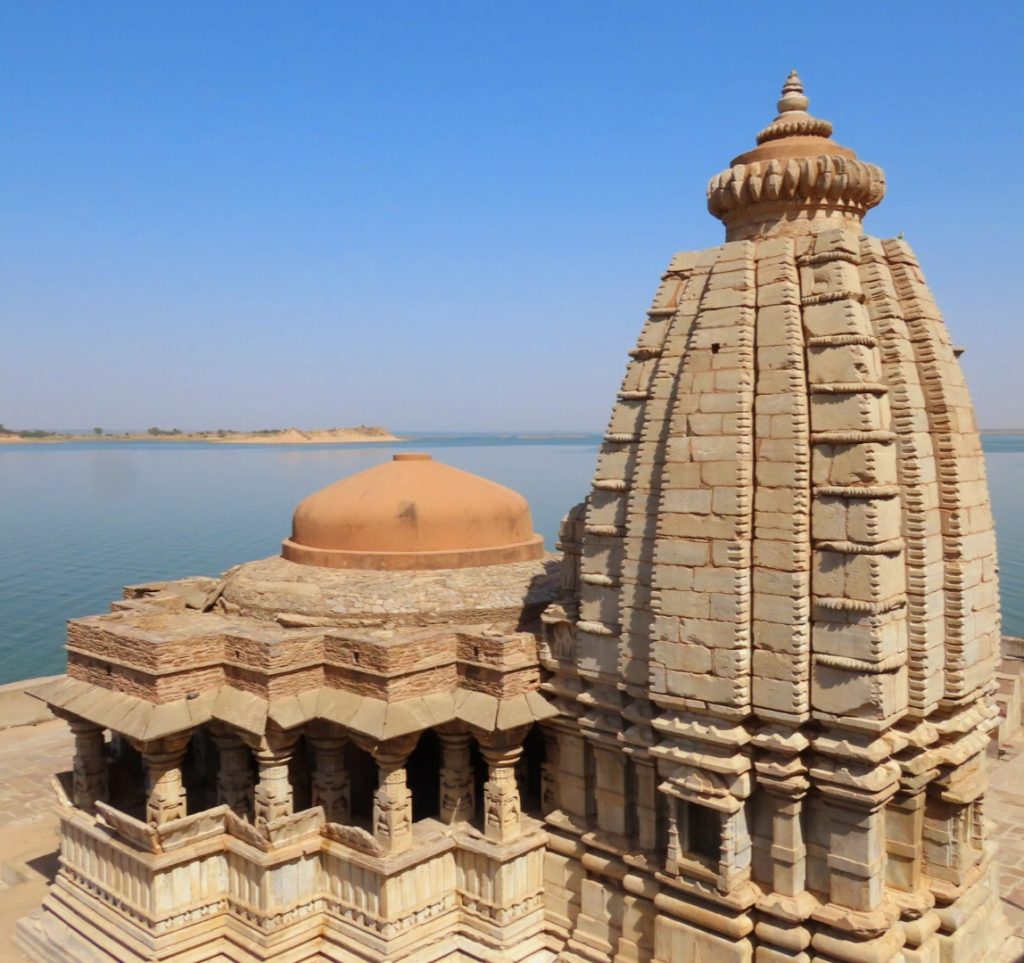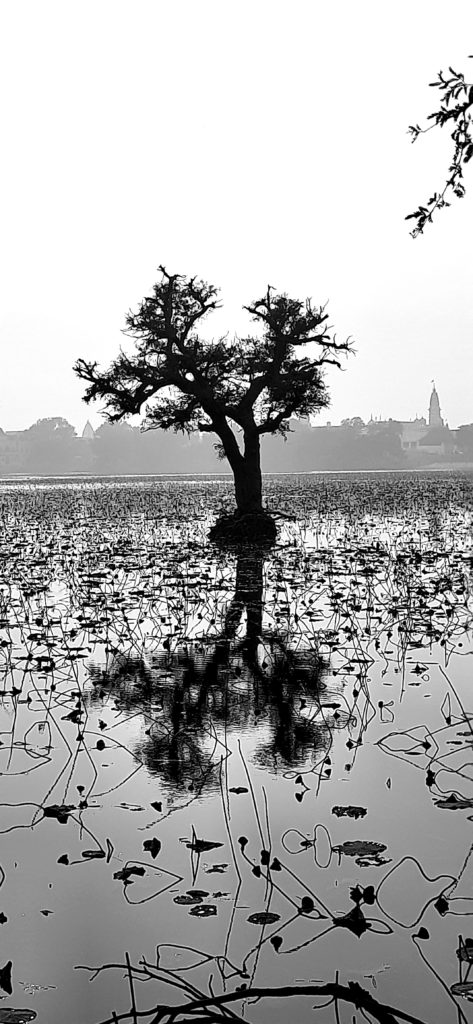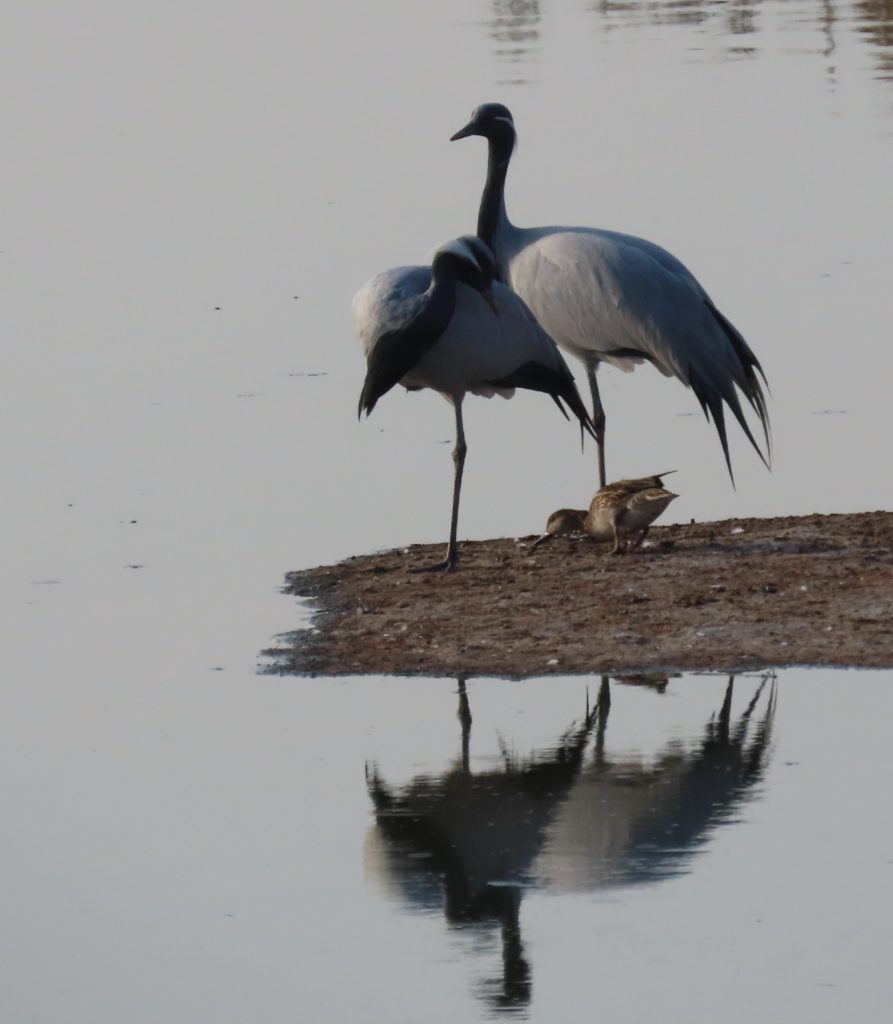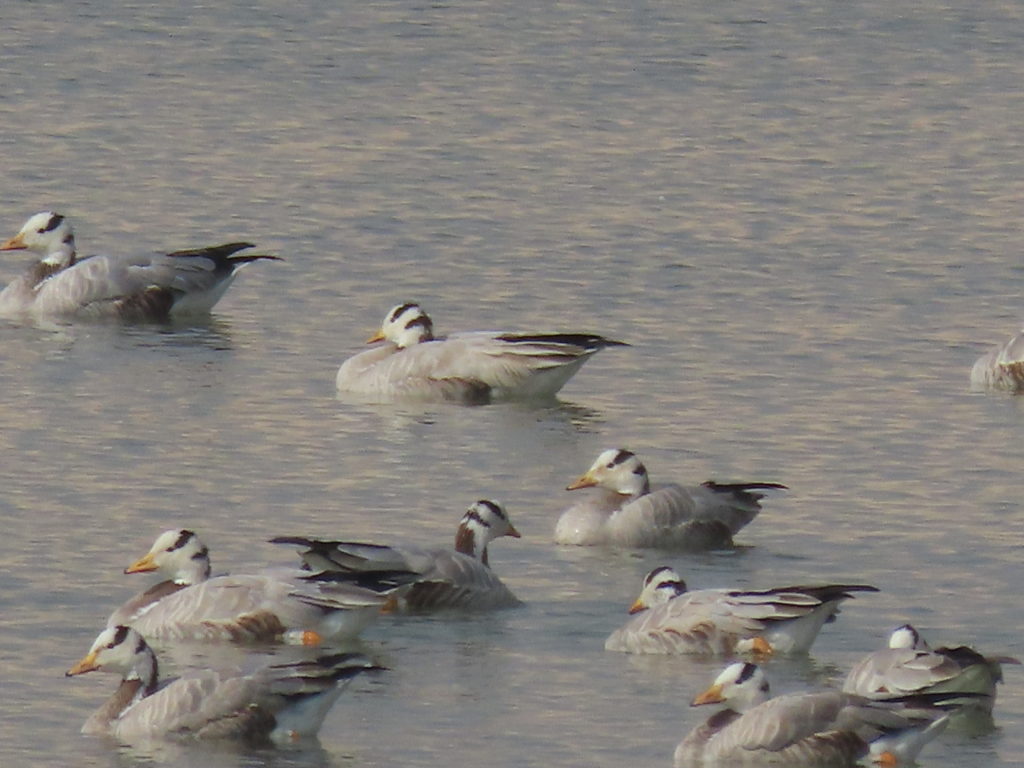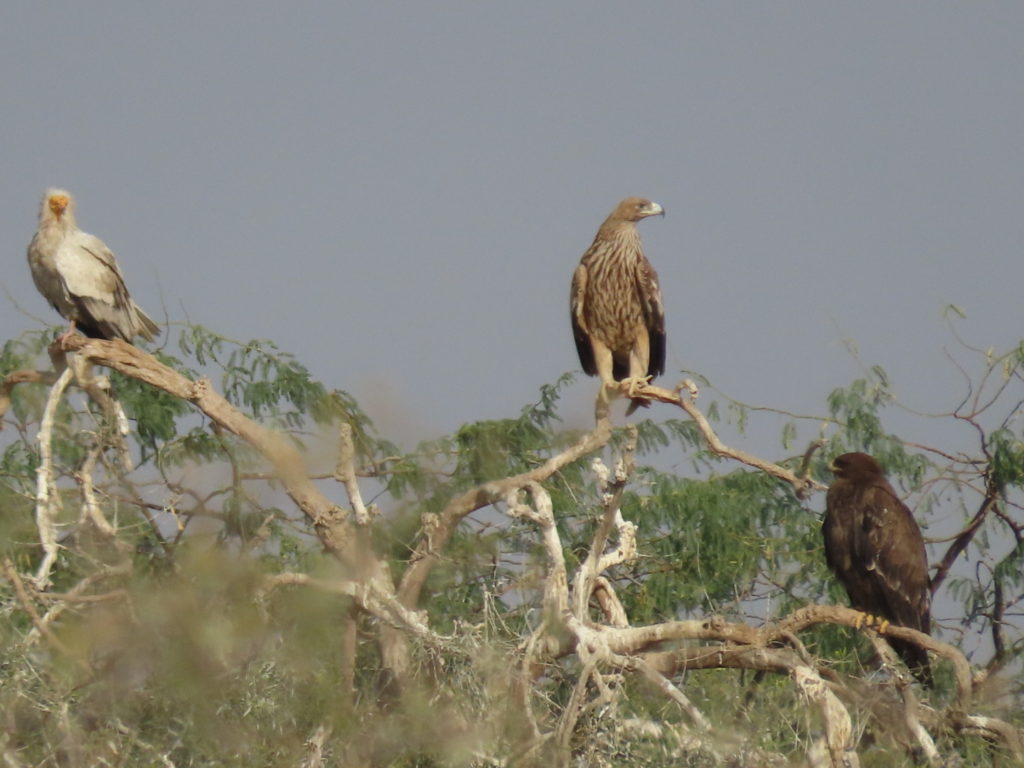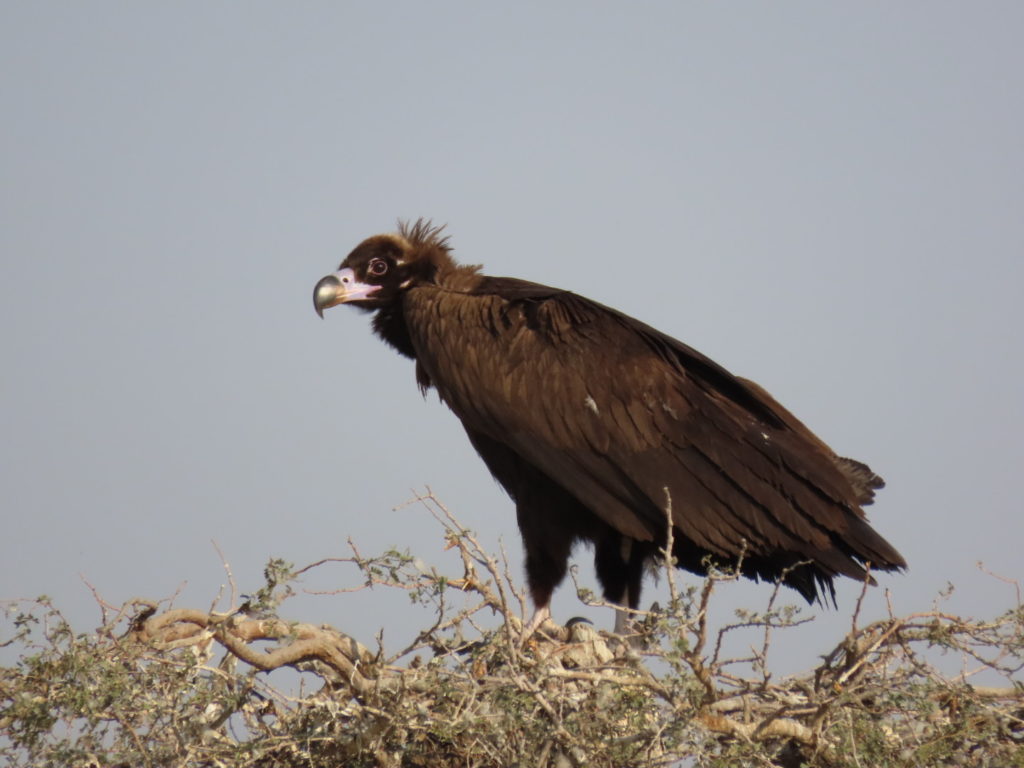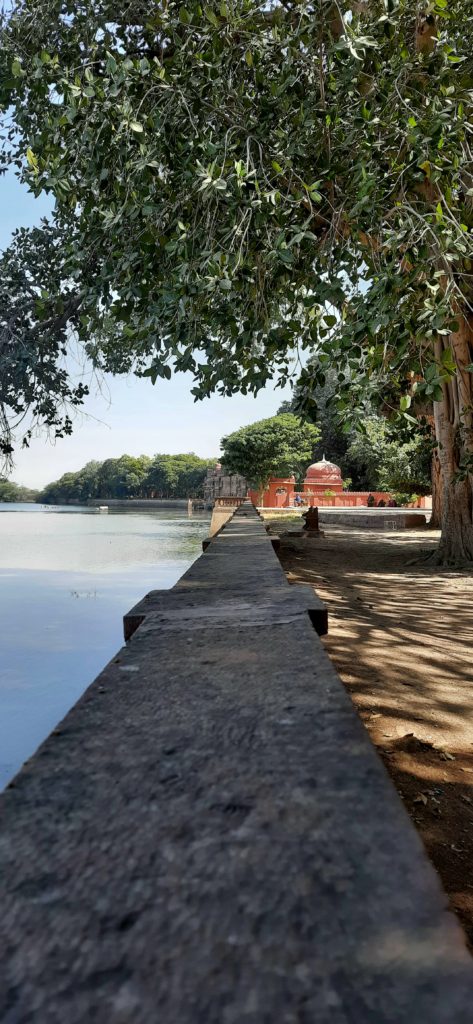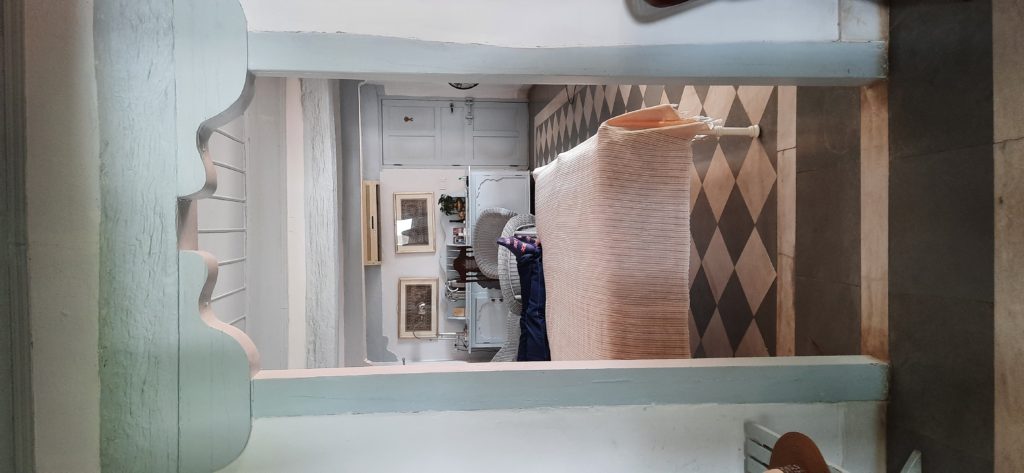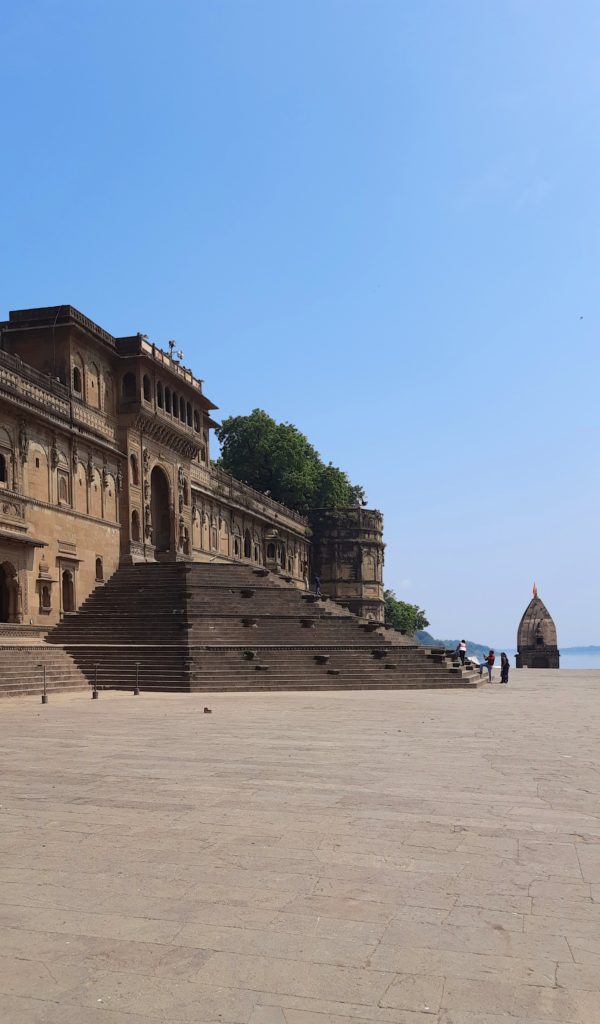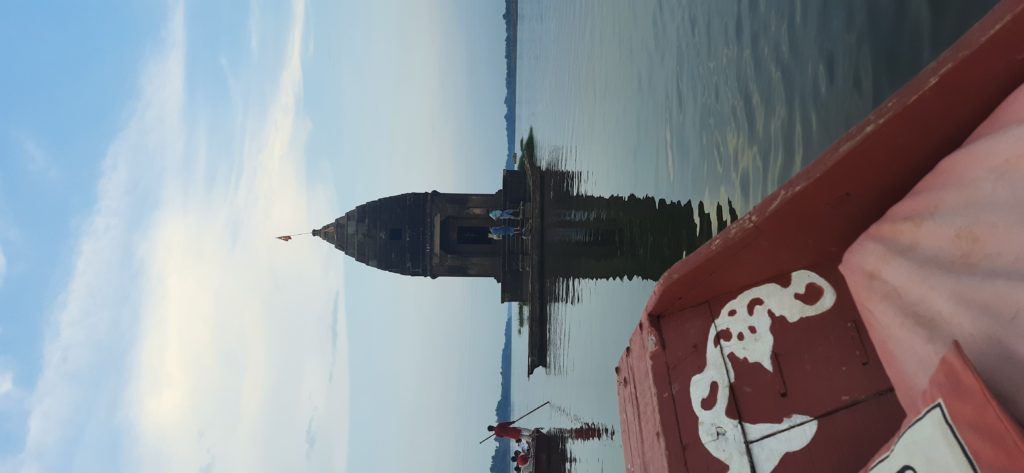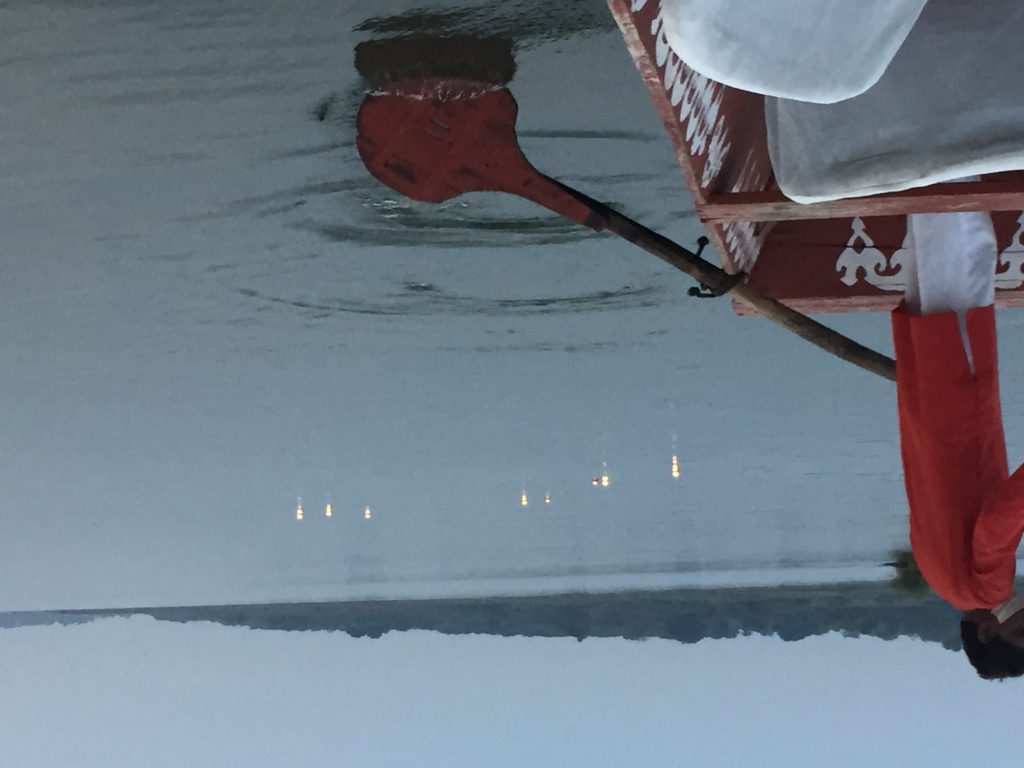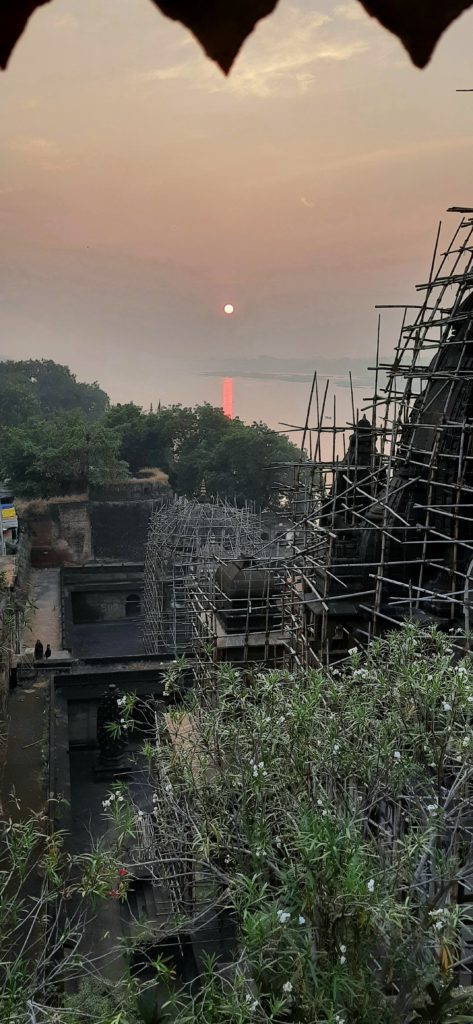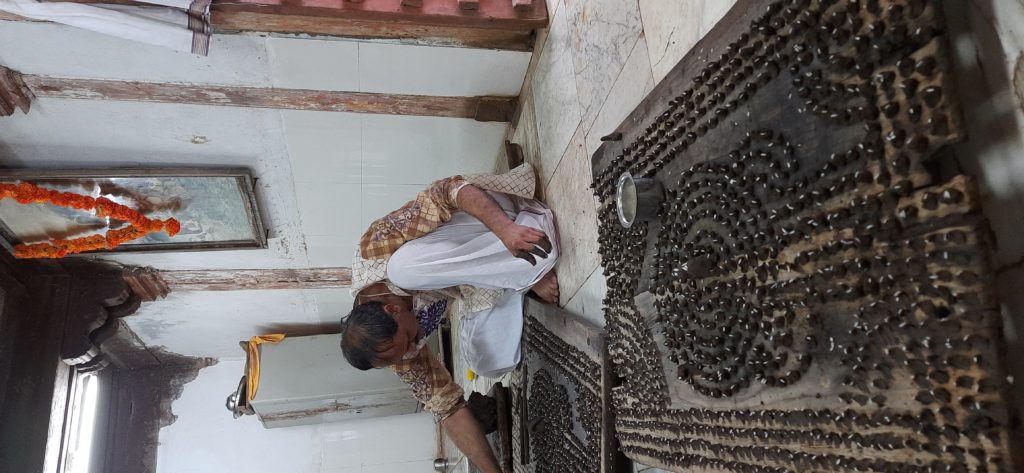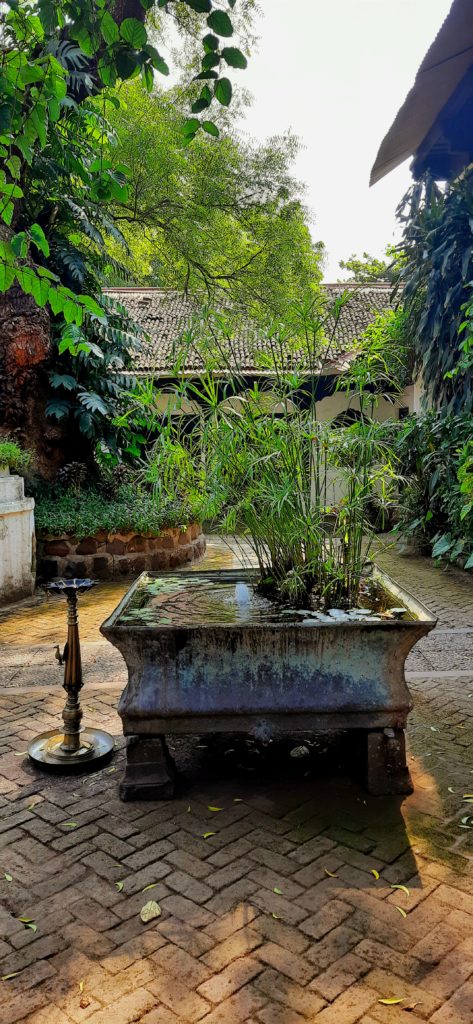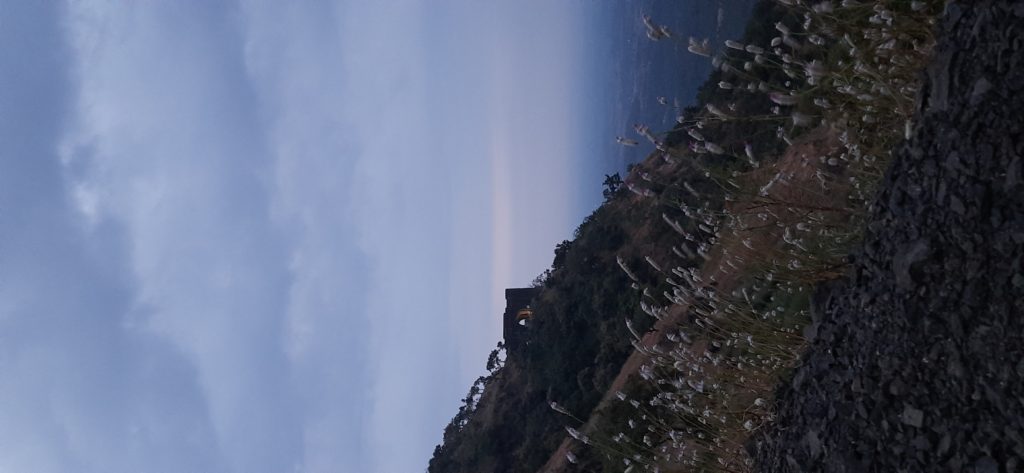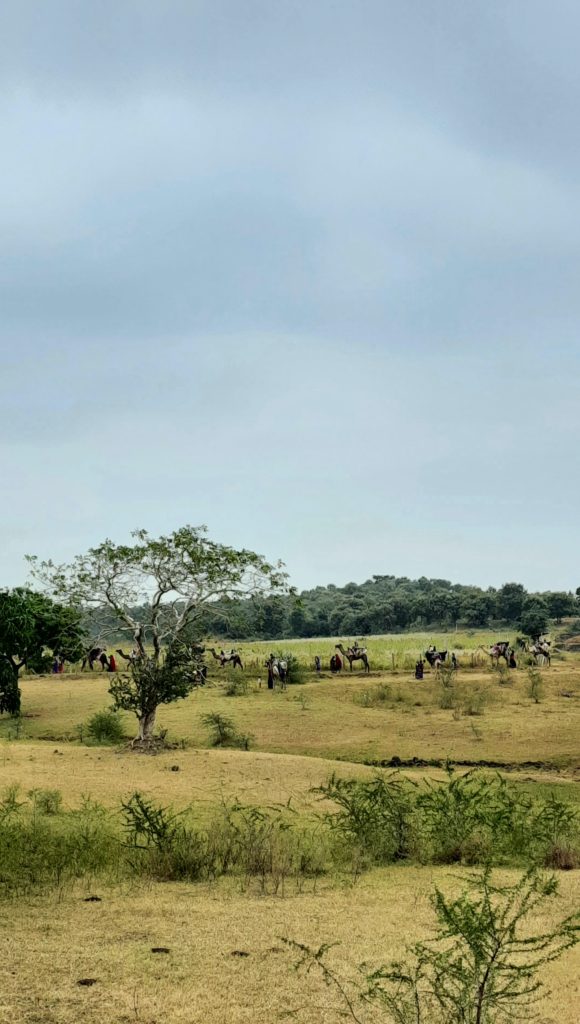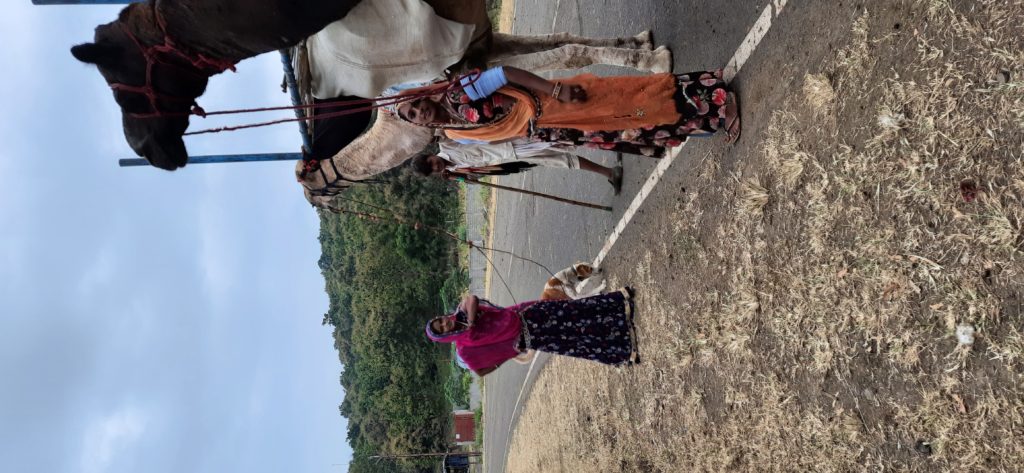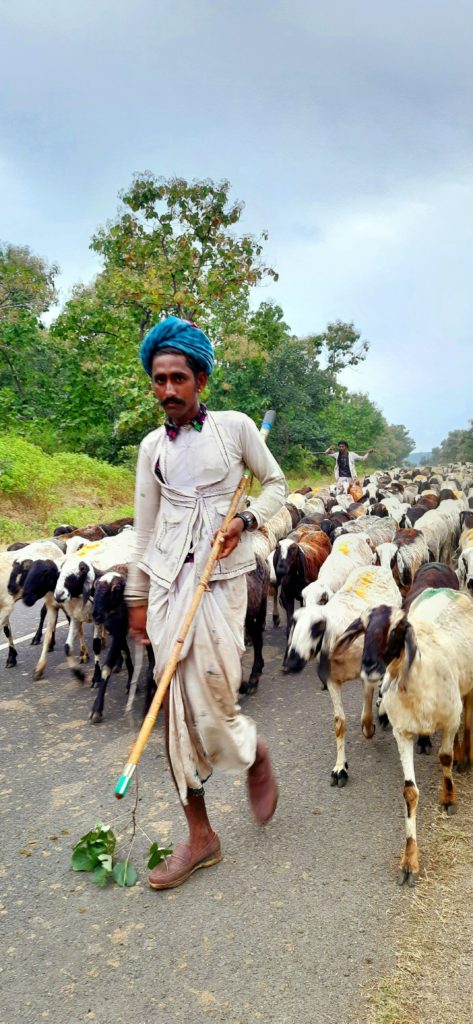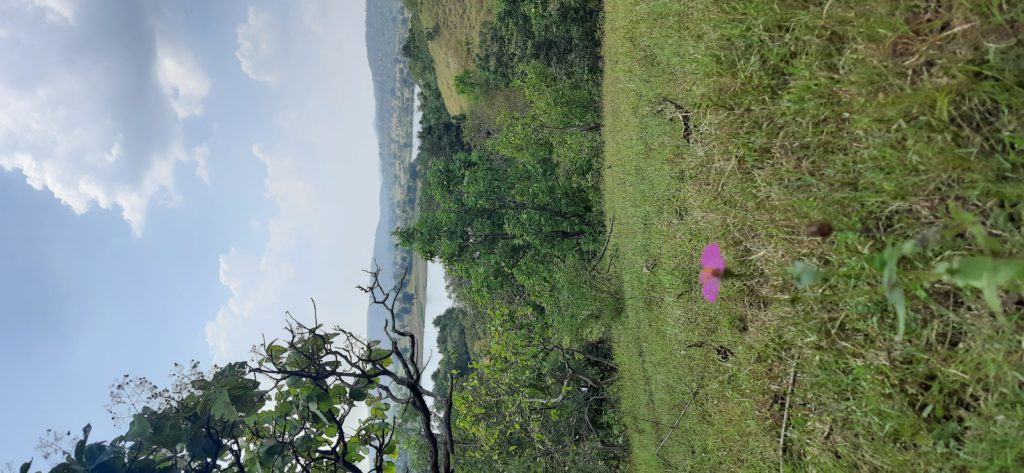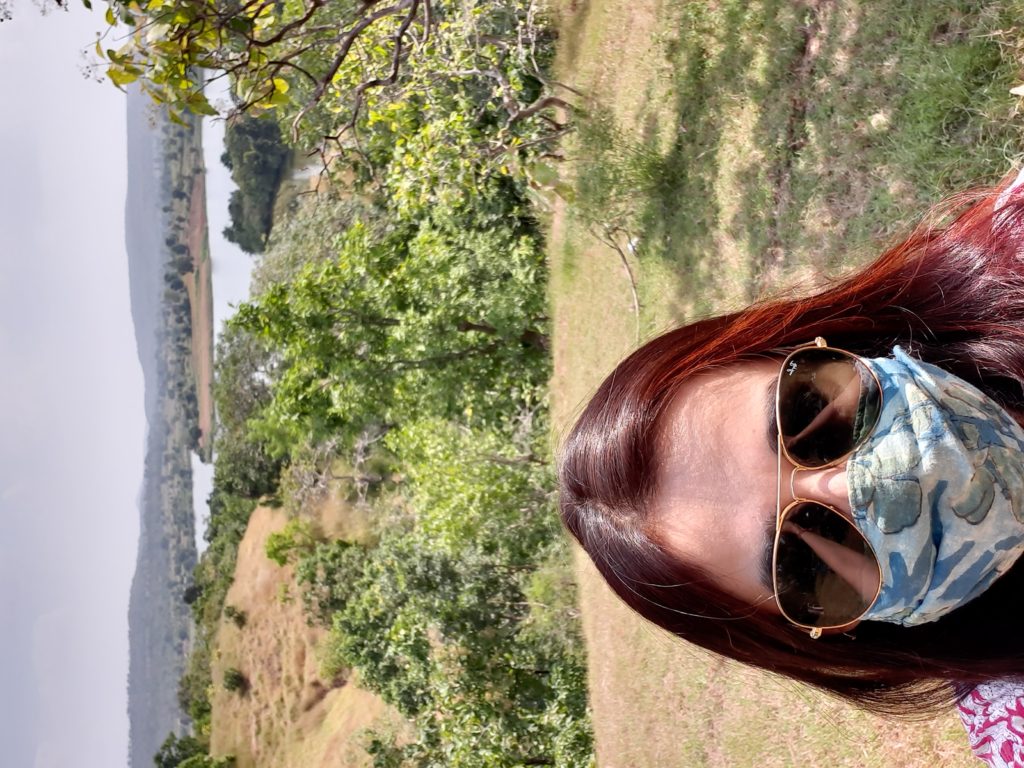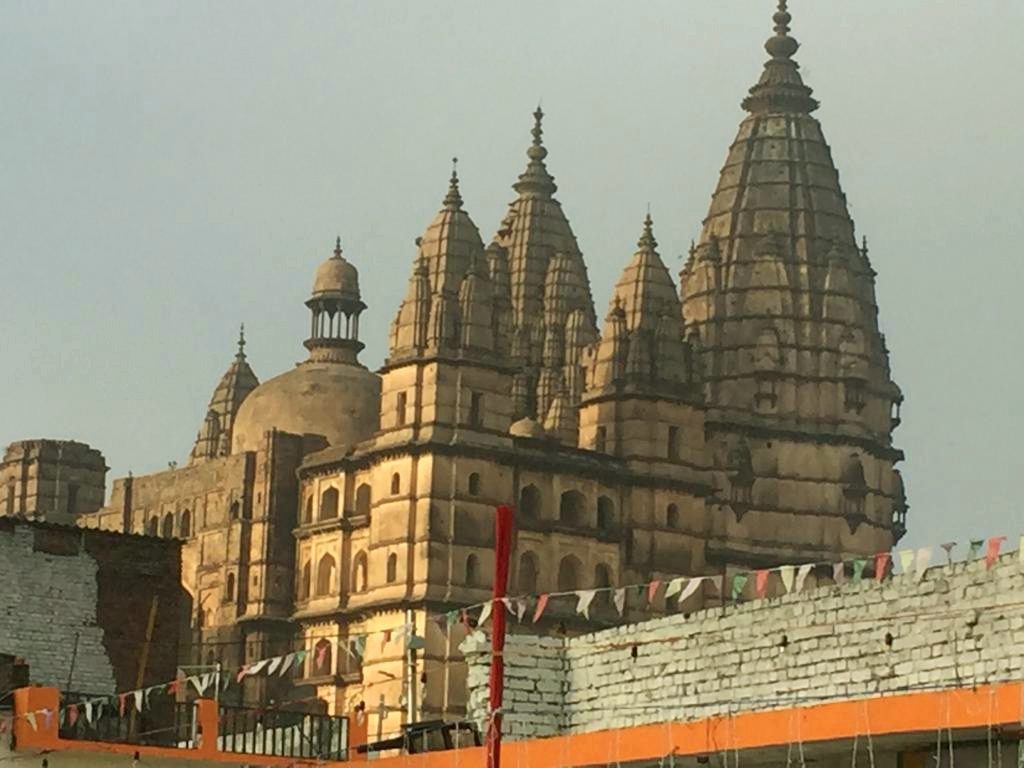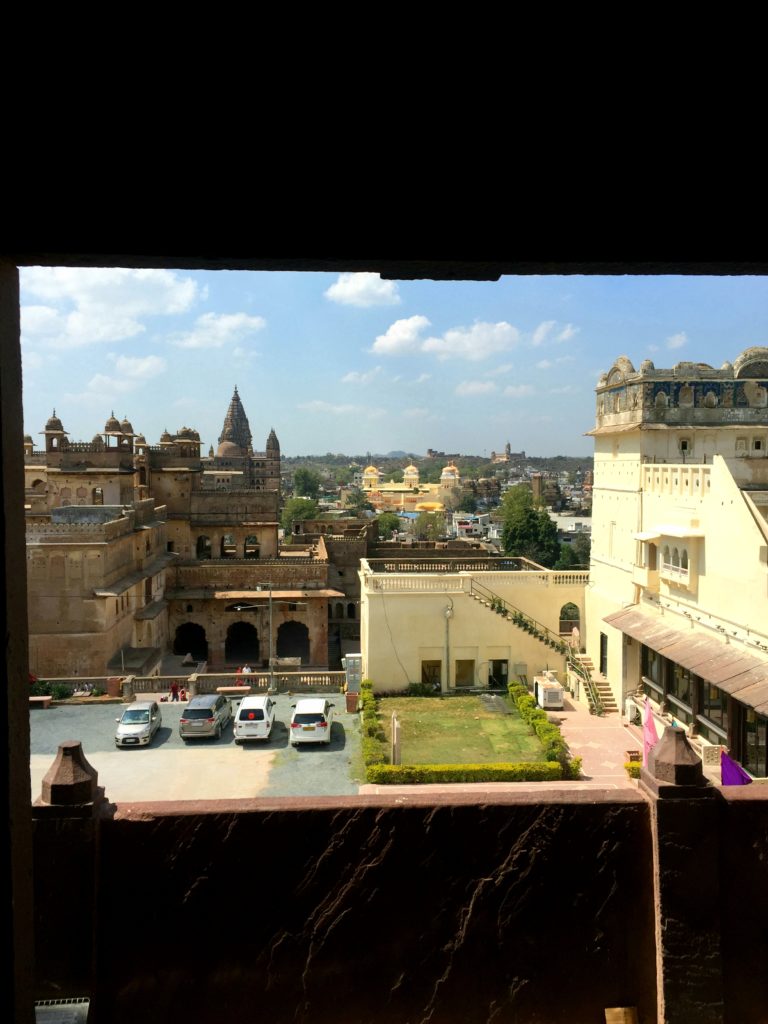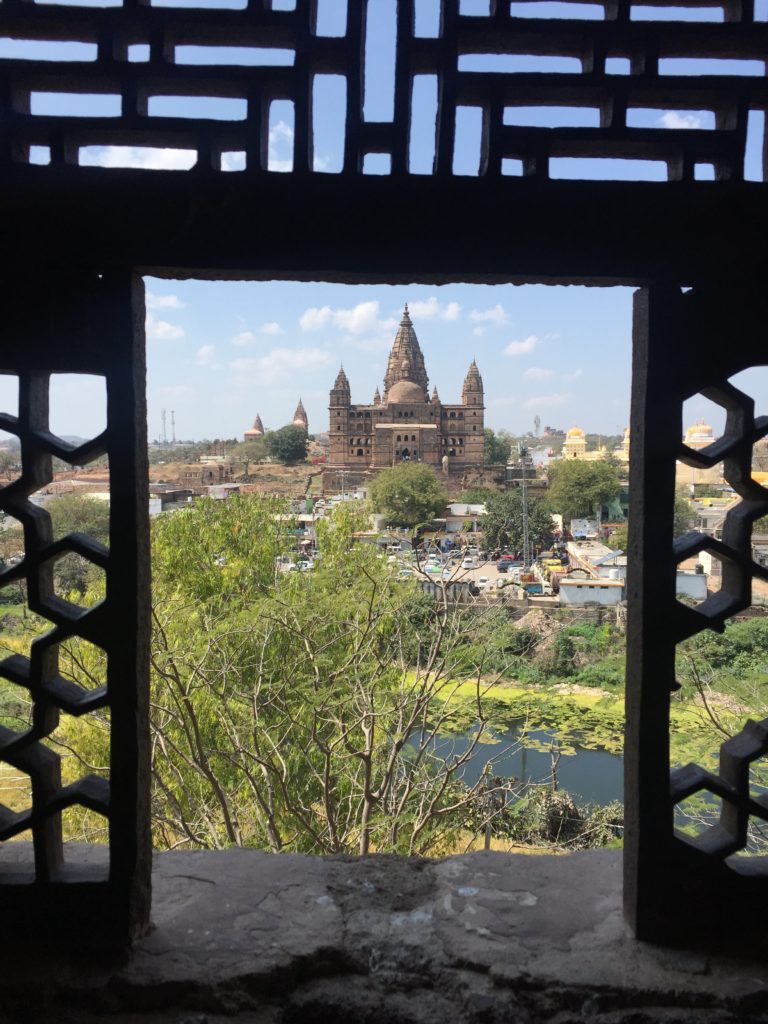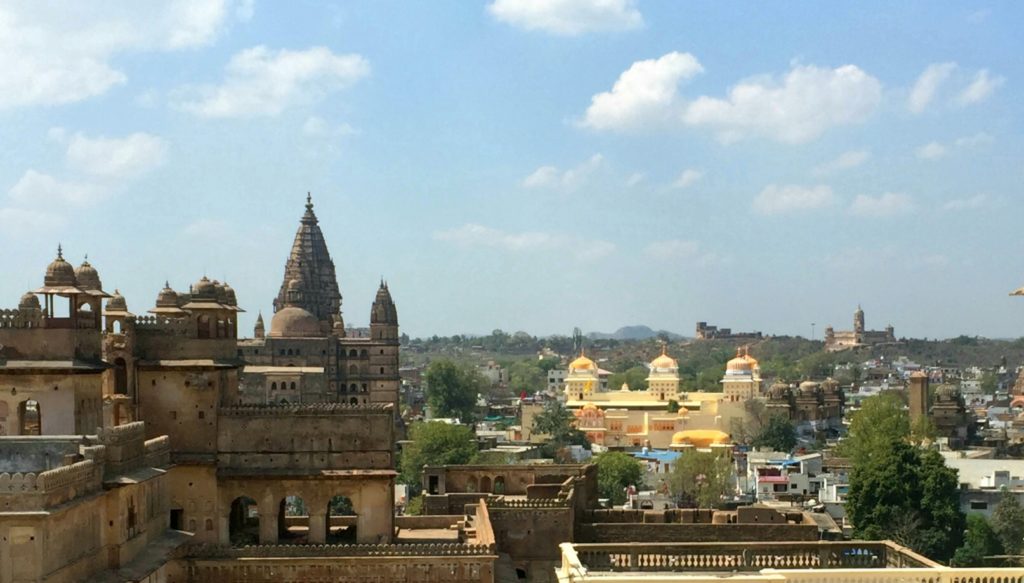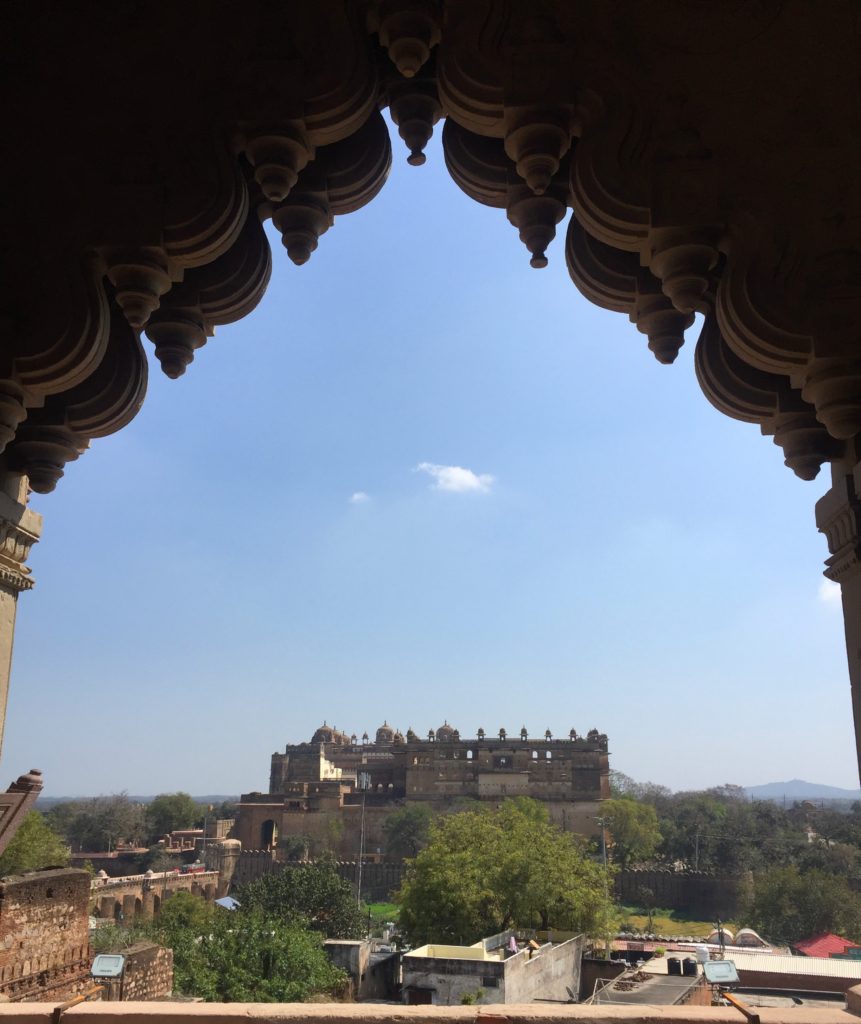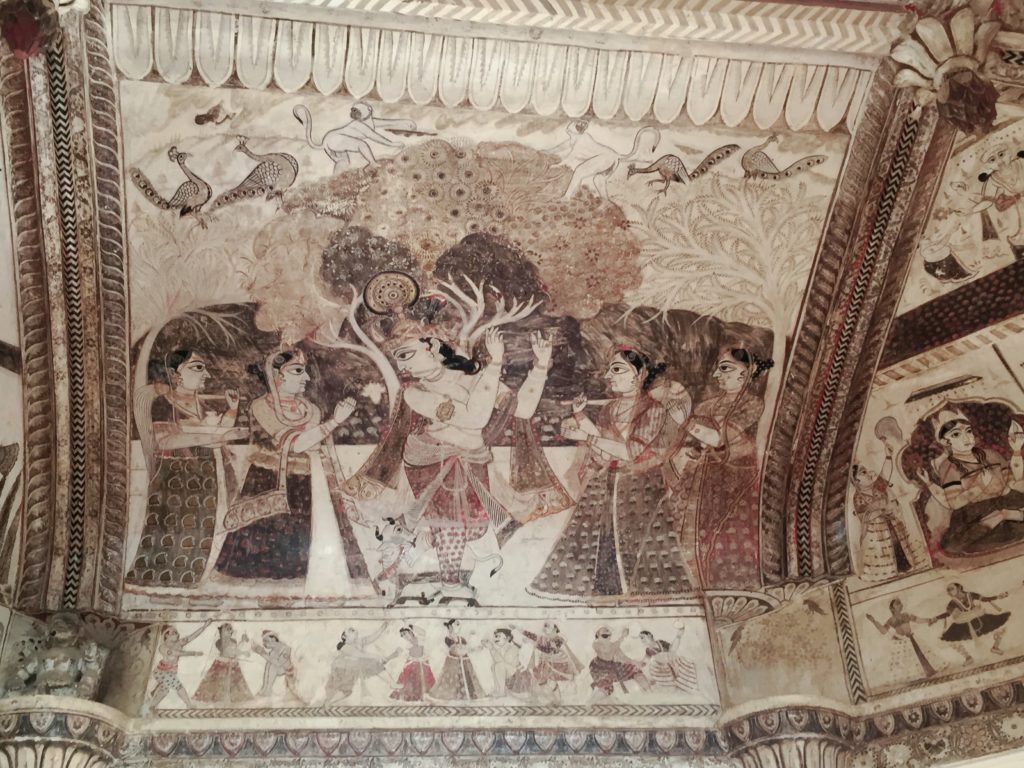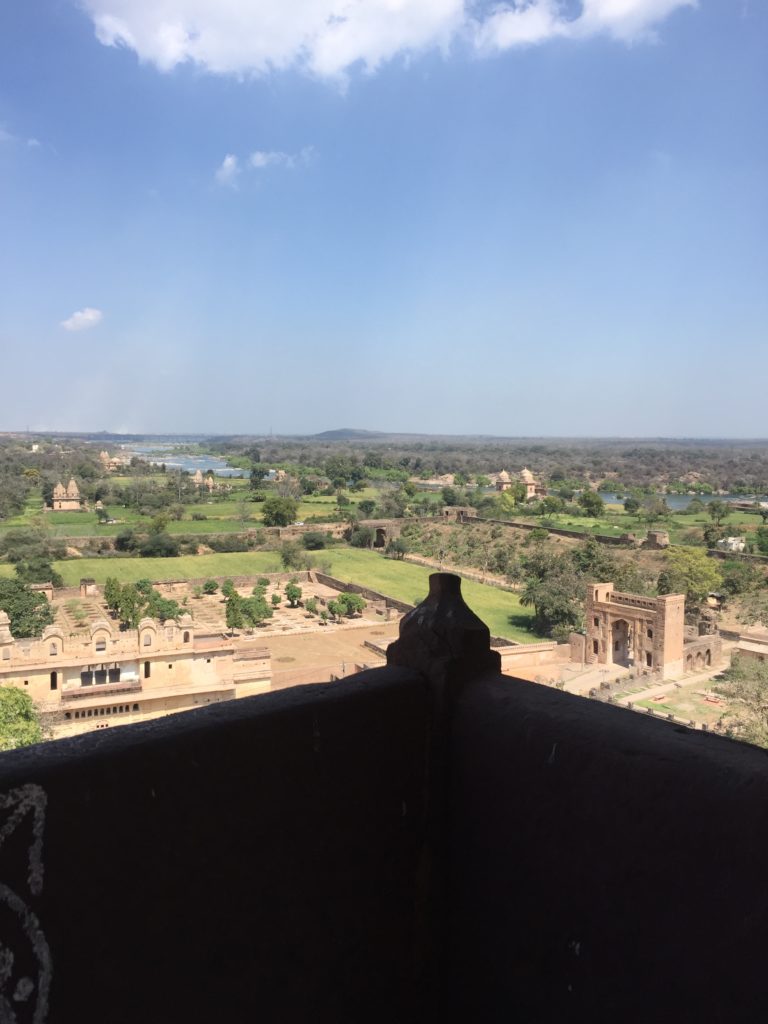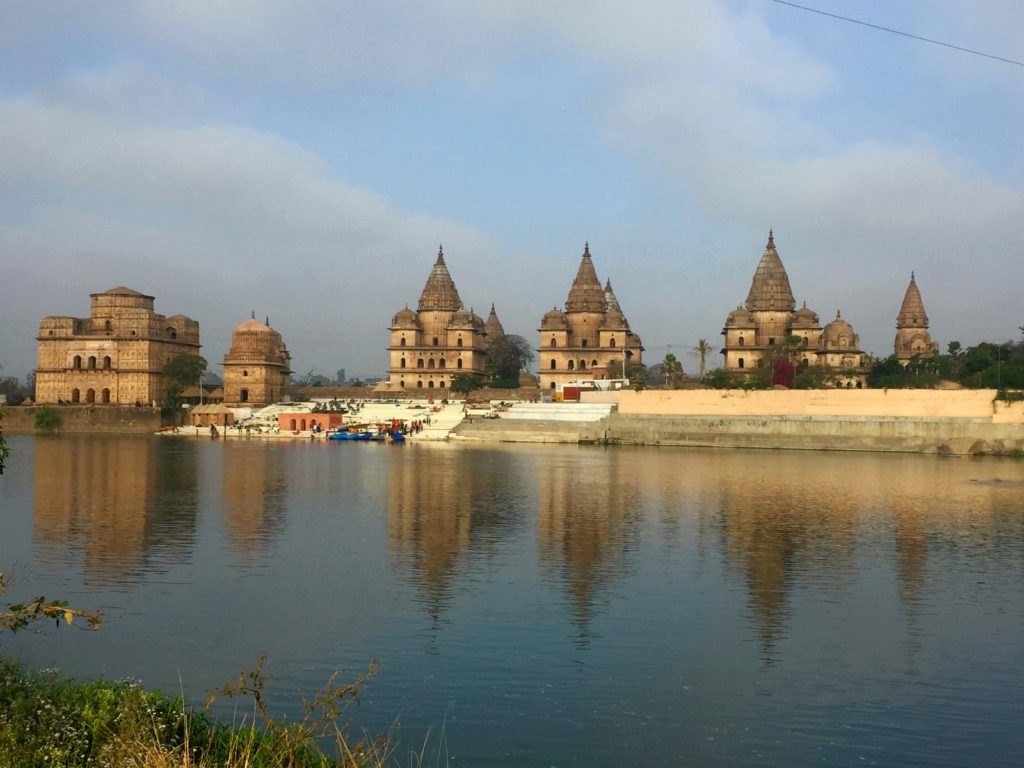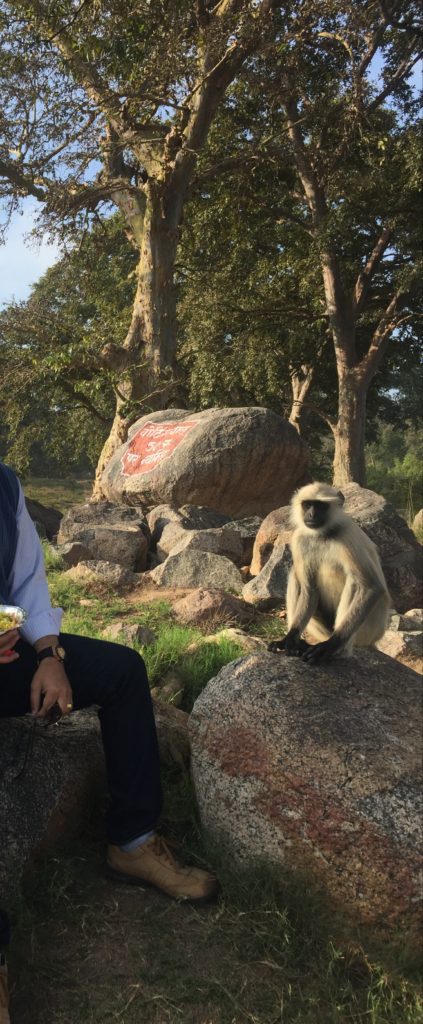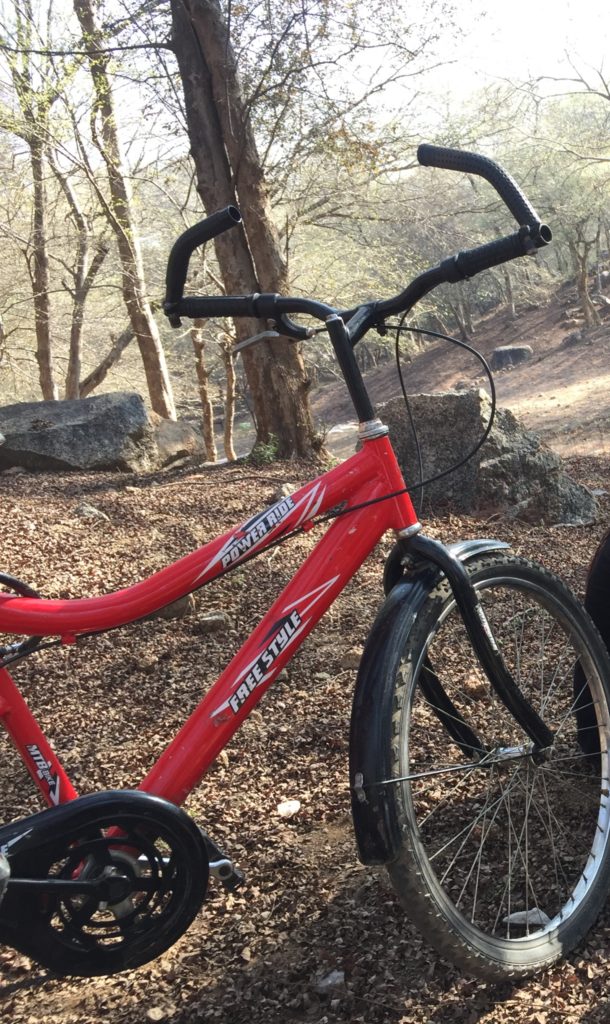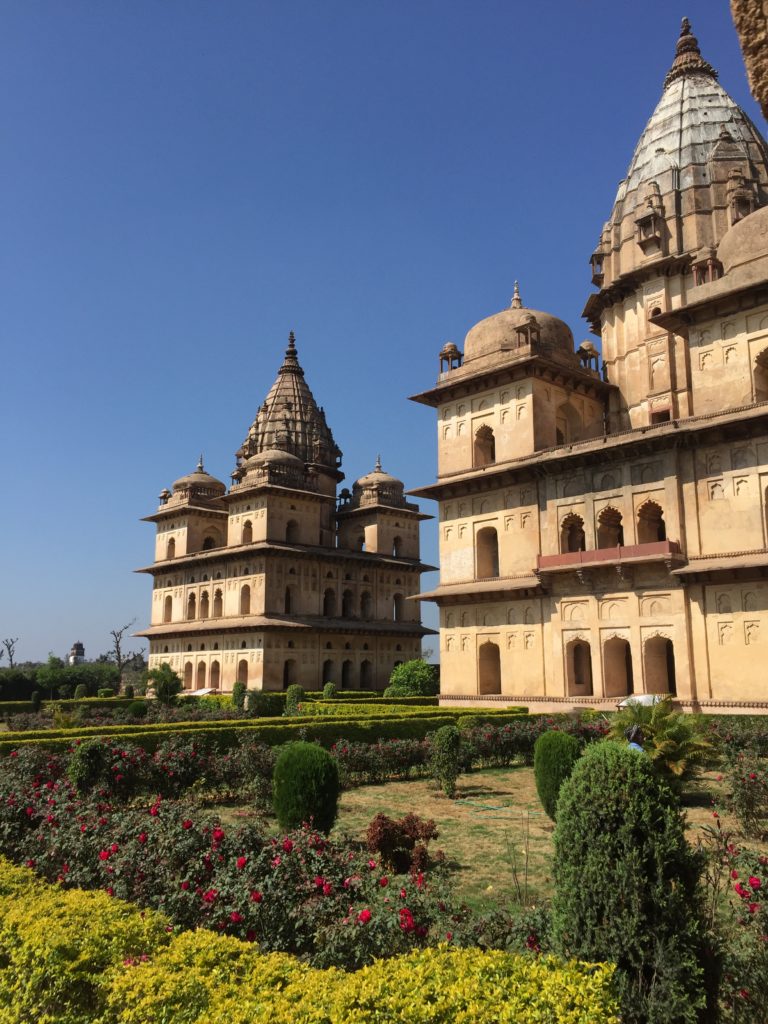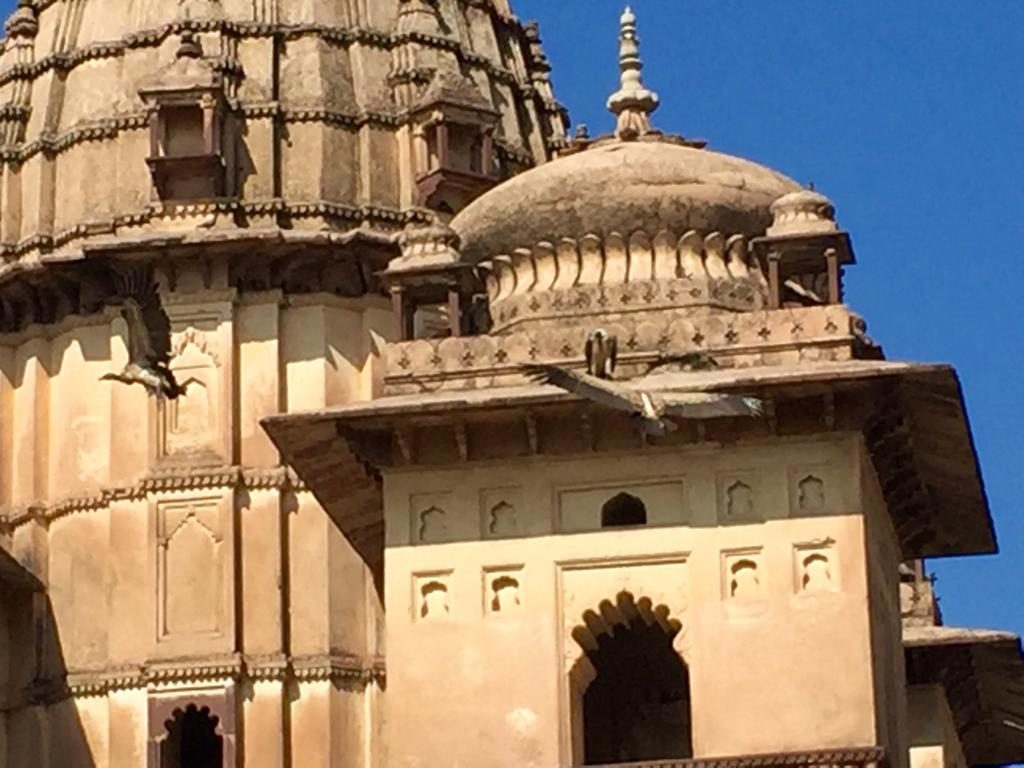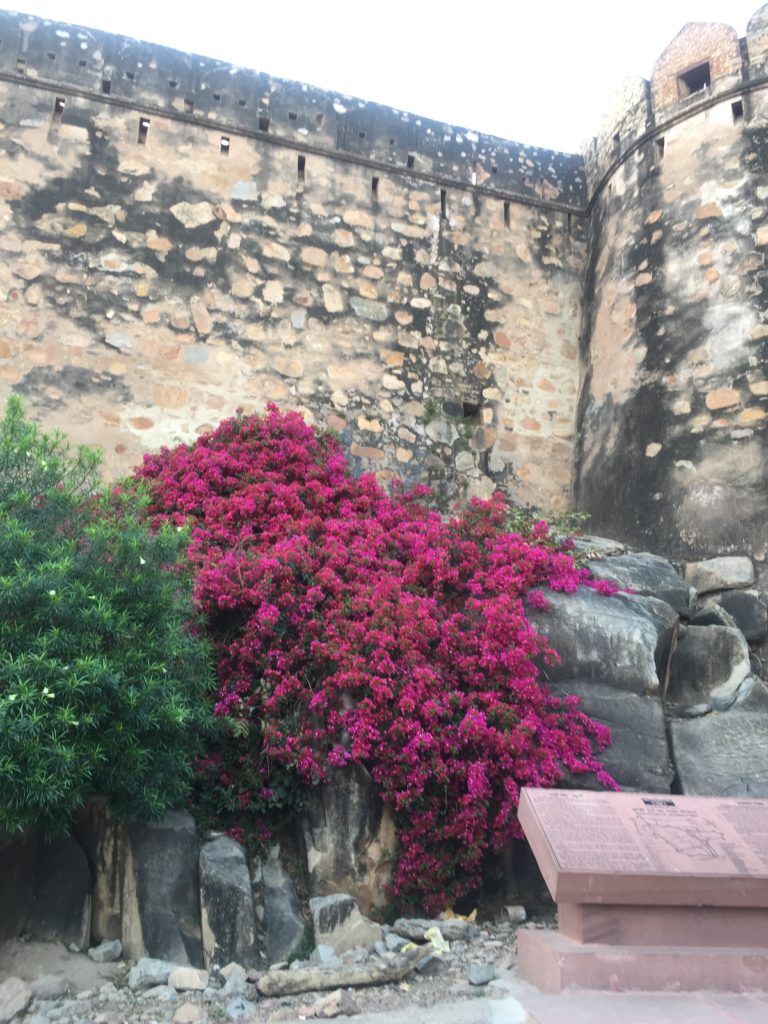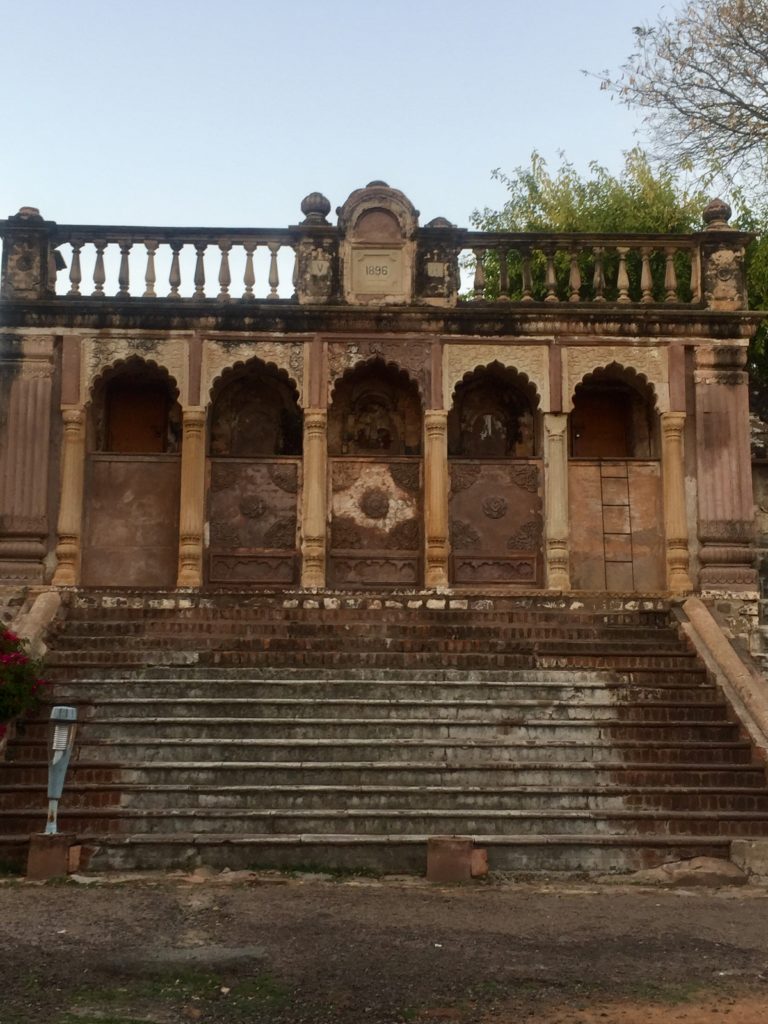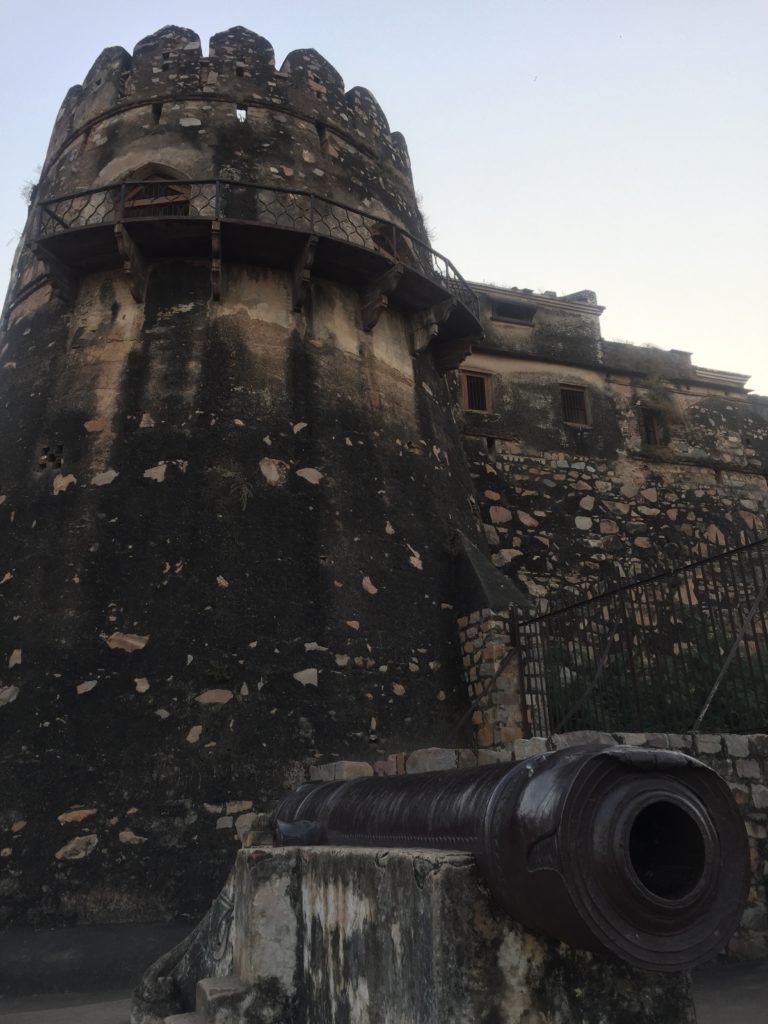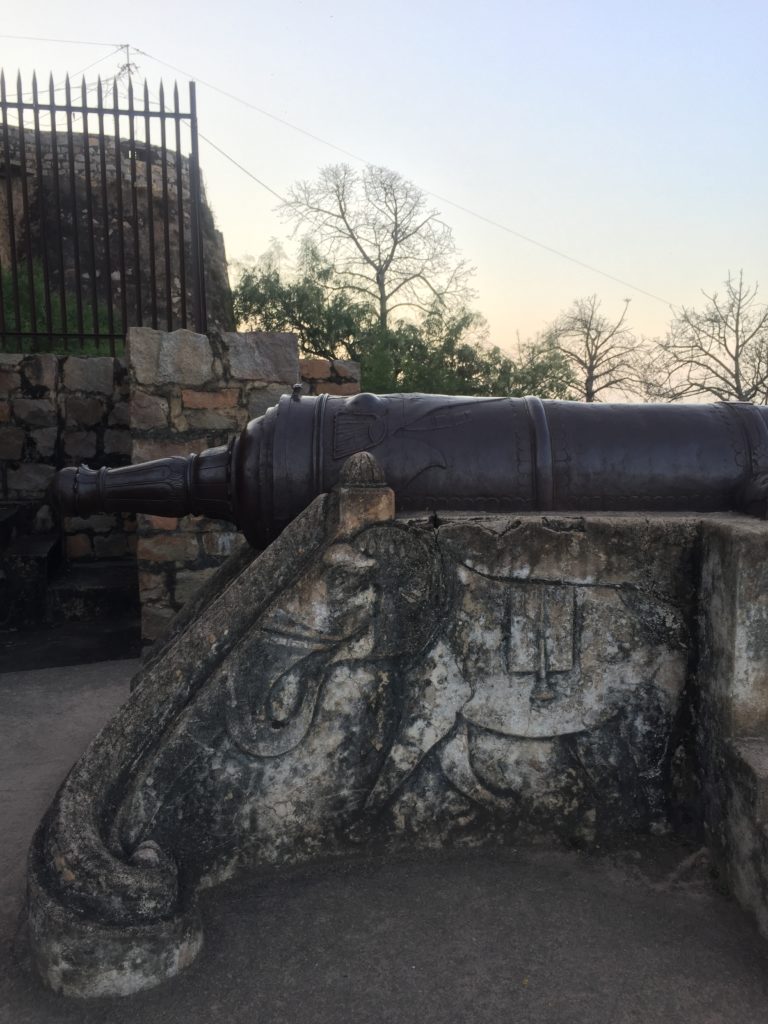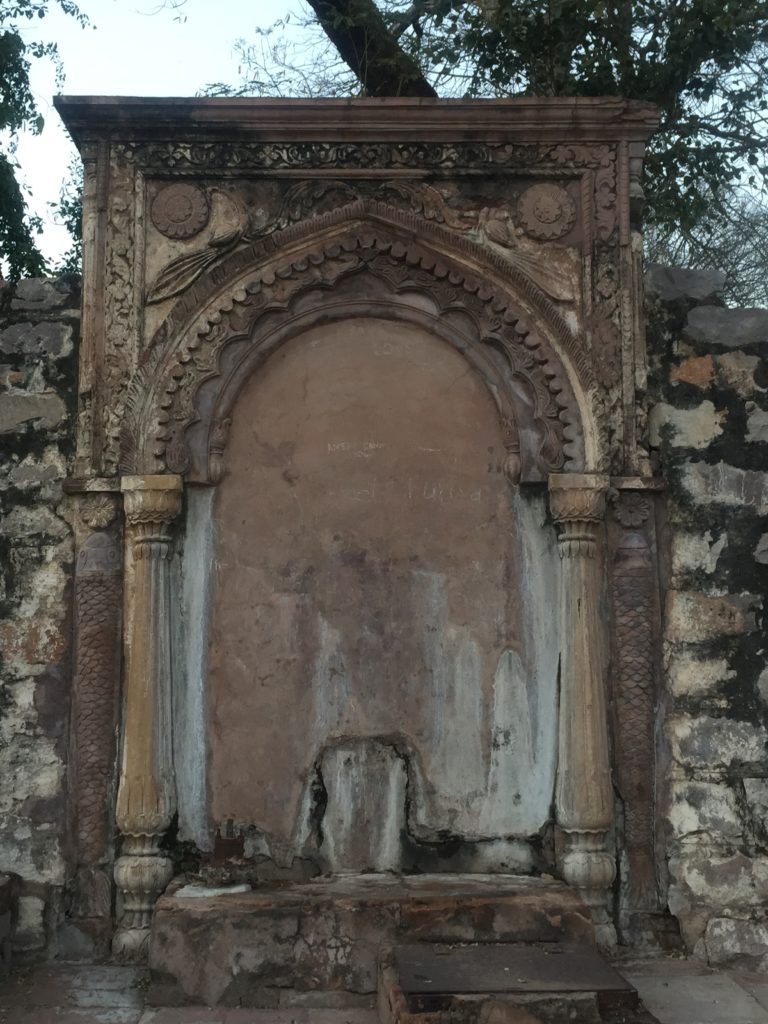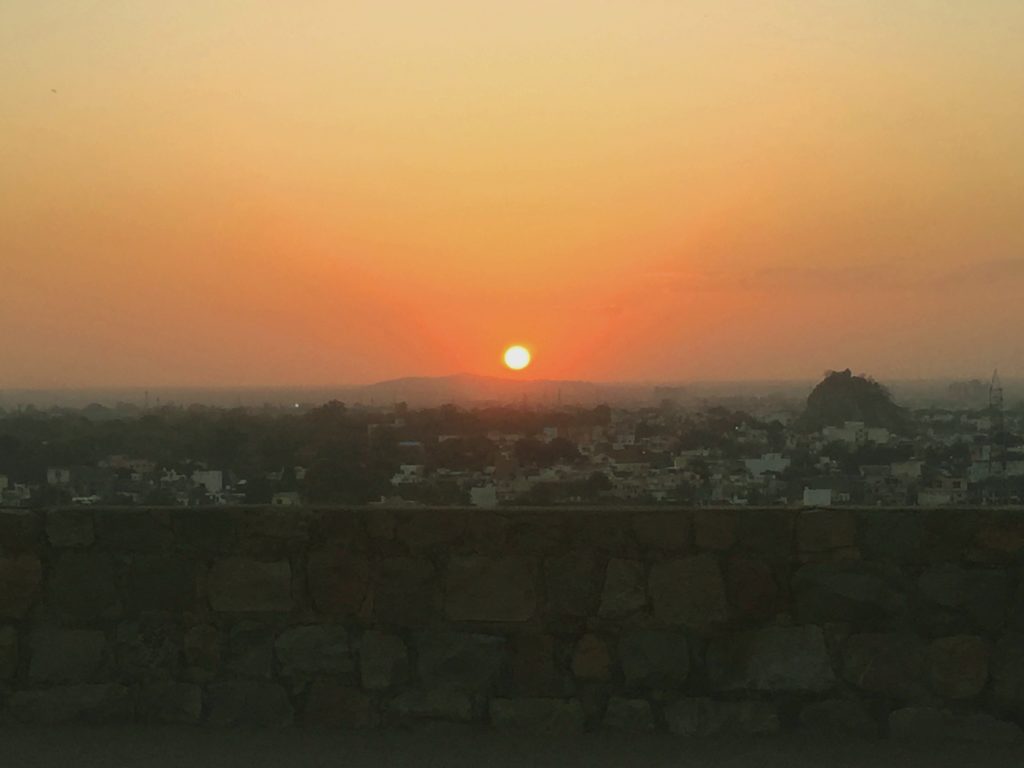There are mansions and there are havelis and then there are the havelis of the merchants of Bikaner who traversed the fabled Silk Route. Merchants, traders….travellers of yore. Peddling their wares in far off lands and returning with exotic treasures. What stories they would tell… of fabulous cities visited, small yet intriguing places crossed, strange people encountered, the adventures they had…all in the pursuit of the scent of fortunes to be made. To come back home to their families, to befittingly beautiful havelis made with the riches of trade.
Discover the story of original nomads at- At the Darwaza of a Road Less Travelled
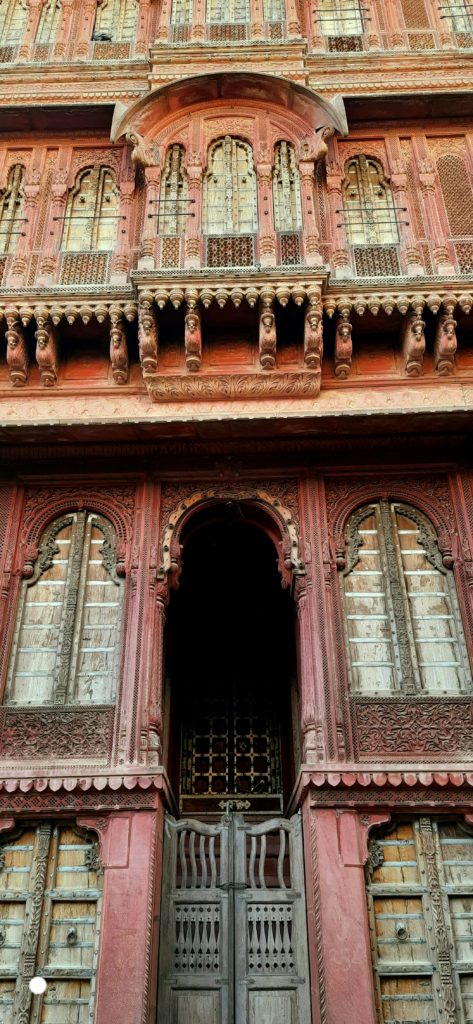
The Rampuria havelis of Bikaner named after the owners, the richest merchant family of Bikaner in the 15th century or so, line a winding maze. There are no fancy grounds, no gate or garden, not even a shred of a shrub! Perhaps they don’t need the superfluous adornment of gardens or land to add to their grandeur. So nothing prepares you for the facades…. There is no build up. Along with the sensory overload there is a physical reaction to them–the jaw slackens, eyes don’t know where and what to take in- the structures, the chiselled Dulmera stone relief, the carved and shuttered wooden windows painted eclectic green and blue, the jharokas or the panels? There is no let up and yet each element comes together perfectly.
Magnificent workmanship is like..- An Ode to Ancient Life in Stone- The UNESCO World Heritage Site of Ajanta & Ellora
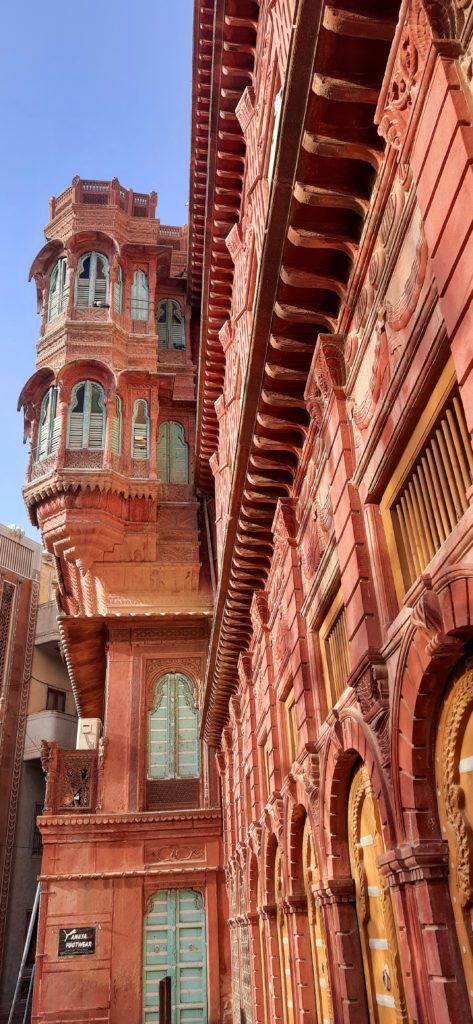
A slightly haphazard lane lined with new banal construction brings us to a little town square of sorts. The main haveli presents its closed haughty profile much like the famed ‘Bani-Thani’ of Rajasthan. But a bass relief closer still, on a wall in the most amazing shades of peeling pink distracts us first. King George with his handlebar mustache and two horses at his ears looks down at us a tad comically. Next is a Queen Mary, his wife, with a pair of horses again. The third is intriguing- there are lions at the ears this time and the queen with a double chin wears a big nose ring and looks Indian and self-conscious. Semi-circular balconies with a distinctive European feel crown the bass relief. It was probably the last one to be made in the 19th century.
Find the story of another queen in- Mystic Maheshwar : At the Center of the Universe
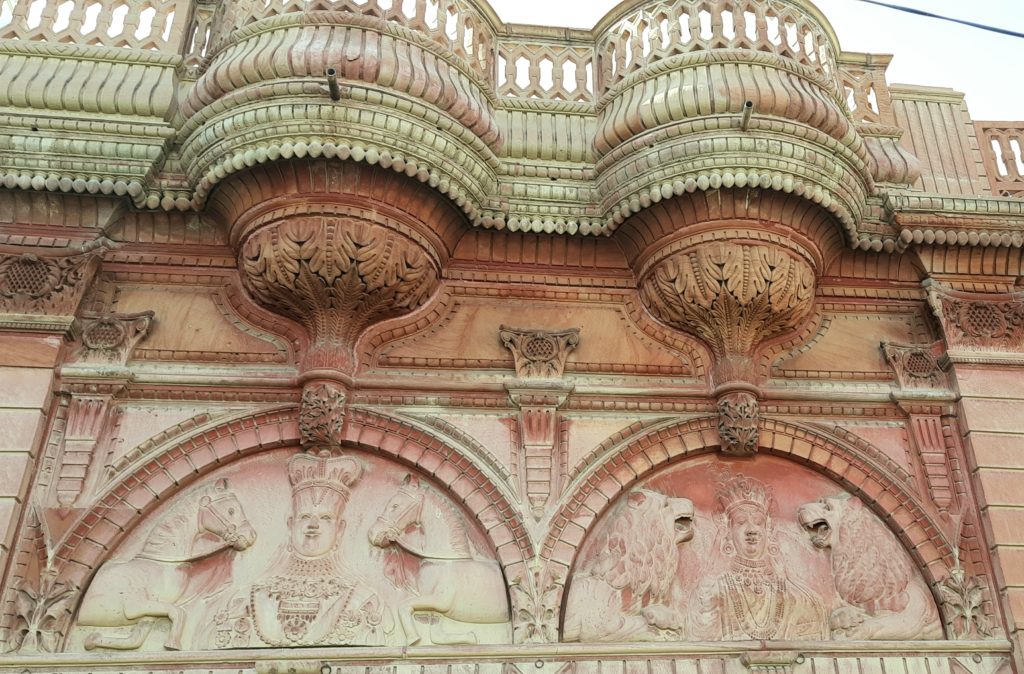
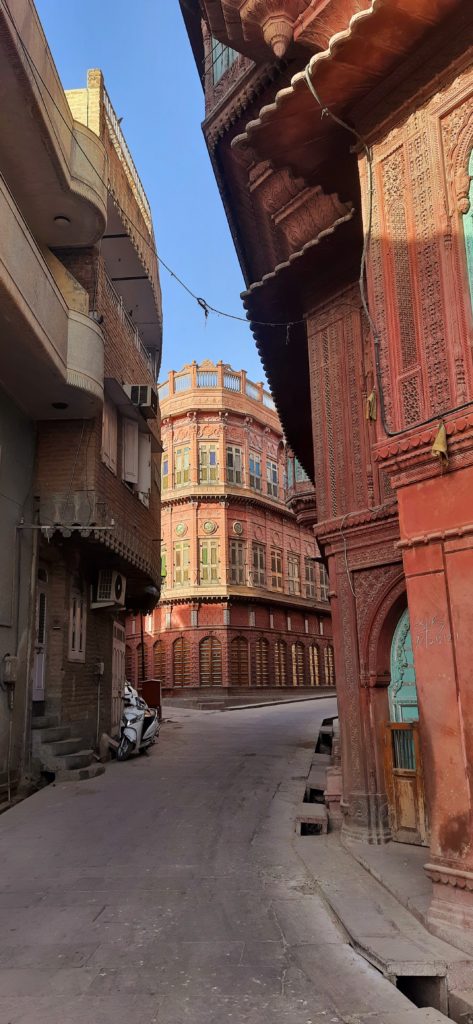
The most photographed face of the entire lot of the havelis presents itself at an angle. In the narrow spaces between the building thanks to its location, it’s the only one which allows a complete picture. It again shows an European influence with brick finish, shuttered turmeric yellow-brown wooden arched doorways, windows and coloured glass windows on the top floor. The narrow alley is empty even though its way past the morning golden hour. An odd nearby resident walks past with a milk pail and massive cows/bulls saunter around. Waiting to be fed not milked!
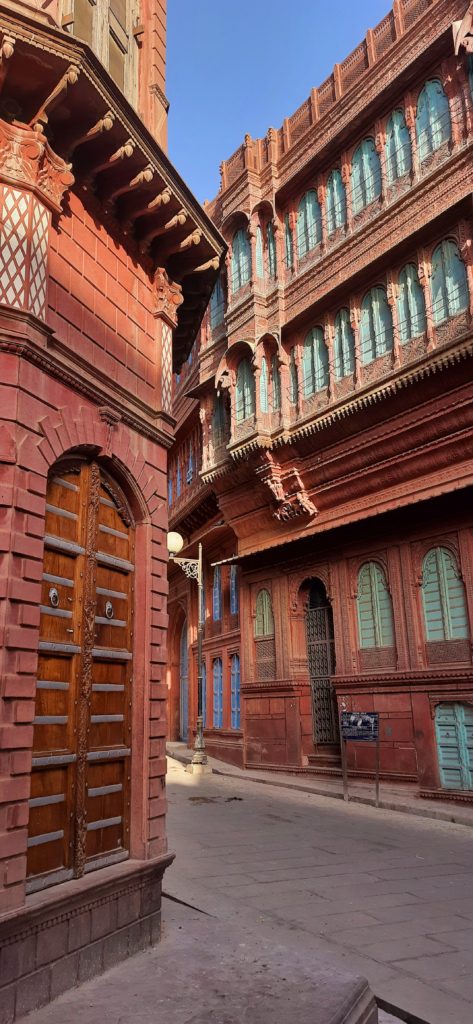
Standing in front of the yellow doorway one gets the best view of one of the most elaborate facades. The workmanship is stunning in its detail I don’t know where to begin. The green wooden windows vie for attention from the protruding jharokas, the panels with simpler carving provides some relief and the only stone parapet painstakingly carved through stands out, as does the tall, narrow entrance. The slight angle and blue doors replacing the green and just a shift in the carving makes me realise there are two havelis adjoining each other.
Read about the stunning stories of Orchha in- Part Two – The Old Gold in Outstanding Orchha
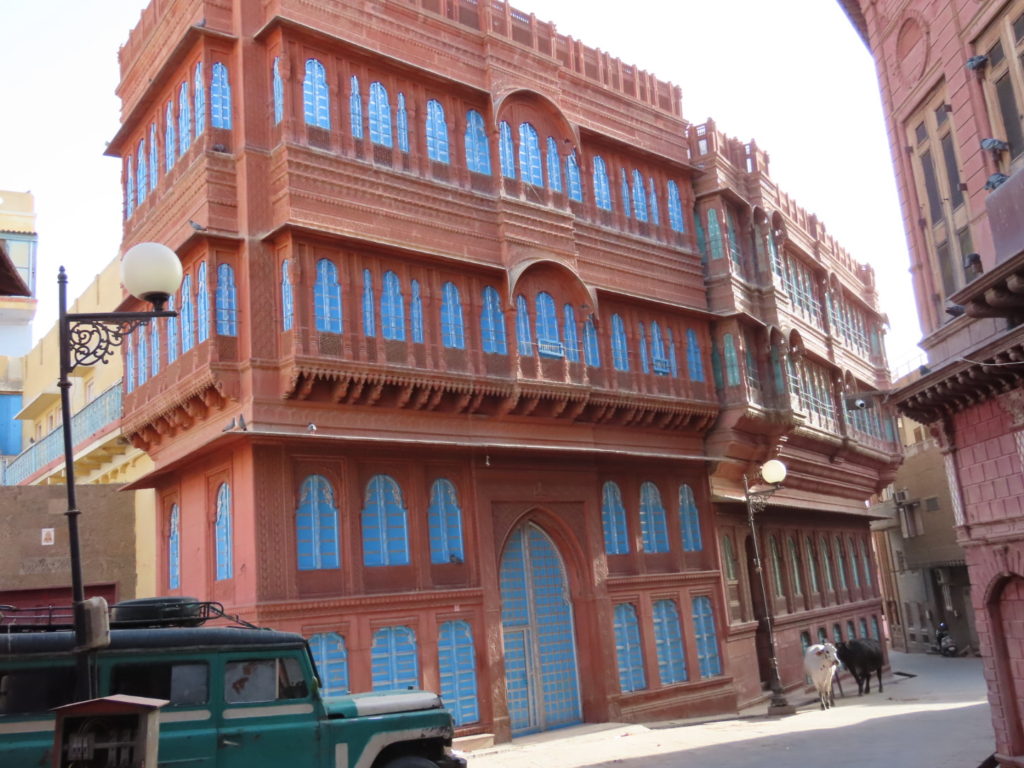
The green Jonga parked nearby, a relic of the past, looks like its been on long journeys over dunes and if I let my imagination run wild, over wind-swept passes all the way to the Steppes of central Asia….the long Silk Route and it survived to tell the tale…. I know its old but not that old! If only it could talk…. It might cough and splutter a lot to begin with…
Travel on another road in- Chushul &Chumathang – Hello Indus & Iridescent Colours!
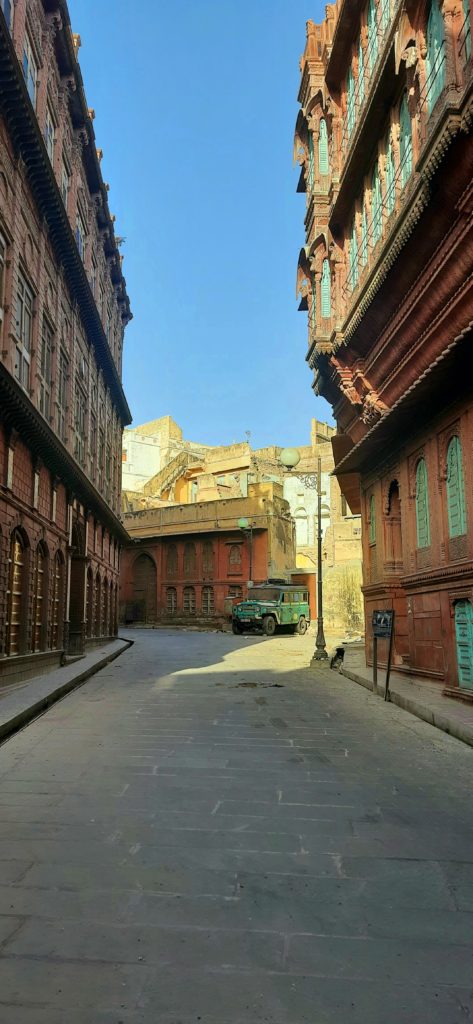
As we walk a few steps a small wooden board next to a padlocked door announces an address in Calcutta. The trade trail crisscrossed the country with the power-centre and trade shifting.
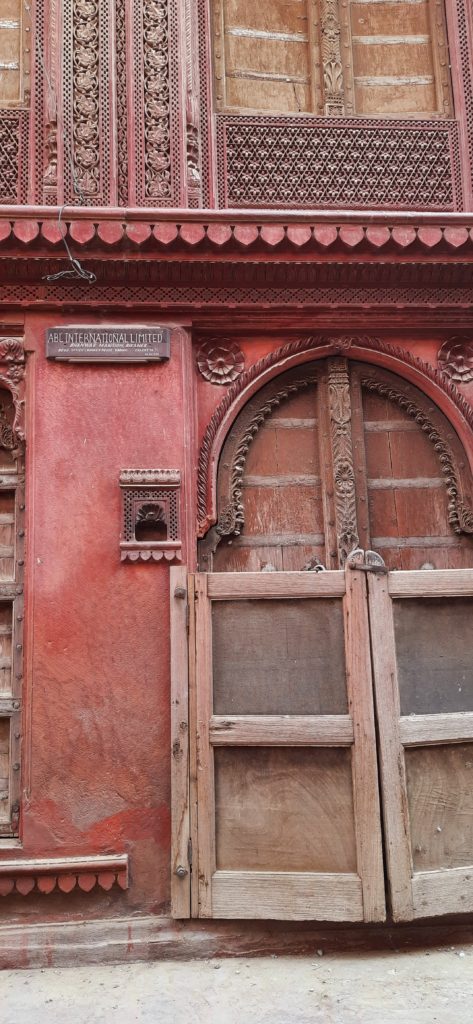
We have to crane our necks to look at the stunning workmanship of the havelis here on either side of the constricted lane. They are all made from the unique pinkish-red Dulmera sandstone found nearby. I find myself looking at rounded, bulbous overhangs, supporting jharokas whose unique shapes with narrow windows at angles make me gape! And I realise that the best haveli(don’t know their individual names) is the least visible and so what if its façade is just that, as a side view lets out the secret. Beauty can be skin deep and when its so beautiful…who cares.
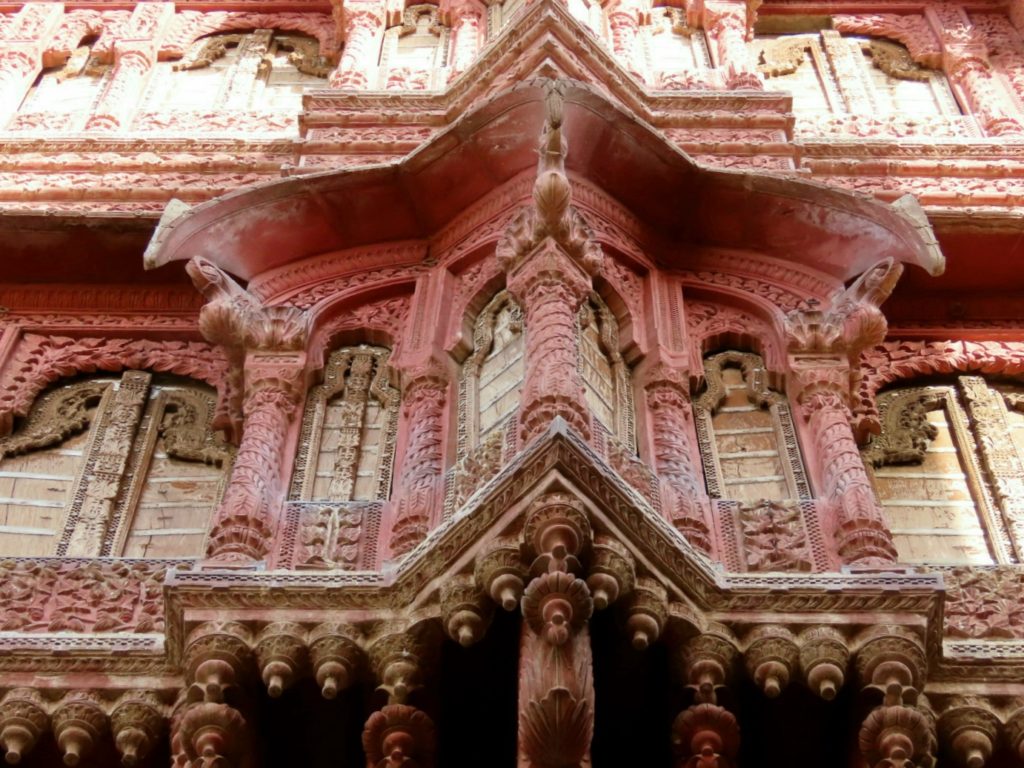
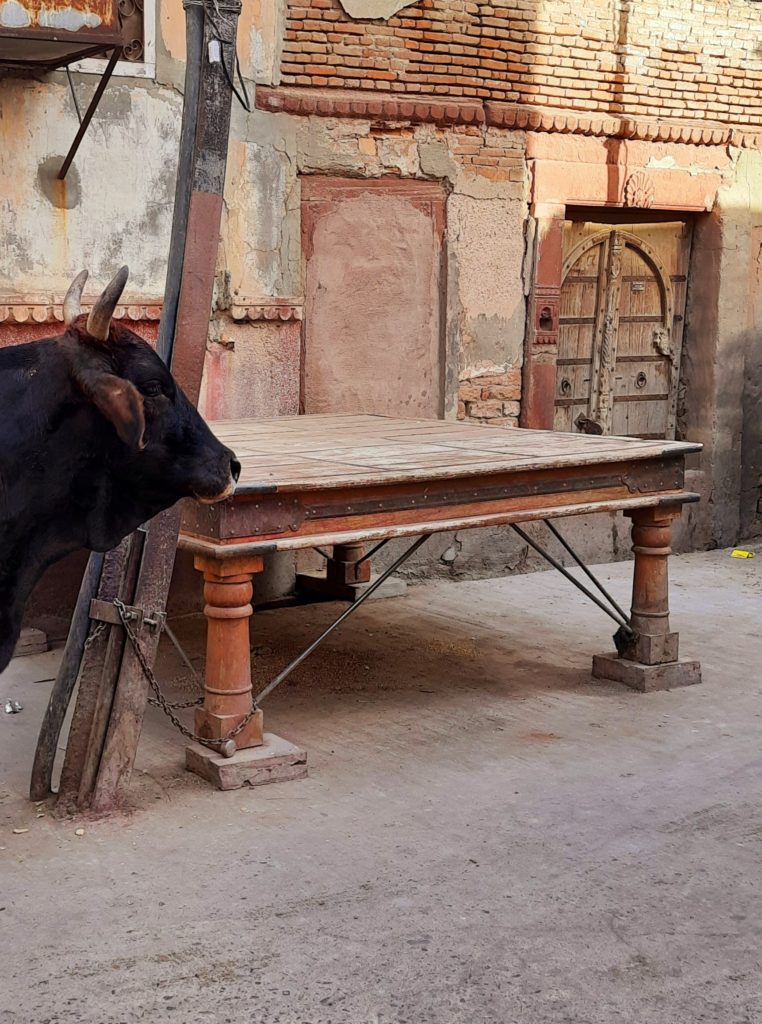
As I am taking in the side profile with a pretty lamp to light it all up at night the cows have finished their promenade and are congregating nearby. I had noticed the massive wooden takht or platform where the street widened out and marveled at this local hanging out contraption. As one of the bulls gets too close for comfort looking for a treat I scramble onto it. Sitting in safety and admiring the haveli like a roadside Romeo I fancy its pink- red colouring is rather like a permanent blush thanks to centuries of awe-stuck admirers.
Discover the other attractions of Bikaner in- The Bird-book of Bikaner
